
Home » Trips » 3.5 Whale Watching Cruise

California Gray Whale Watching
3.5 hour whale watching expedition, $99/adult | senior $79 | $49/child | infant free (must book a seat per person), departs from channel islands harbor in oxnard, whale guarantee feb 14th – april 7th – return for free if we don’t see whales., march 24, 2024 update: we have had whales on all march trips so far, the encounters are outstanding.
- BOOK WHALE WATCHING NOW
Expedition Highlights
Family fun whale watching adventure.
- Experience the gray whale migration as these amazing animals make their annual northern migration up the California coast to Alaska with their calves in tow.
- Outdoor seating for everyone!
- Friendly and knowledgeable crew.
- If we don’t see baleen whales, you get credit for the full value you paid for any future whale watching trip we provide for the entire year. (Feb 14-April 7)

Expedition Details
Important times, whale watching from channel islands, oxnard.
- Boarding Begins: 8:15 AM
- Boat Departure: 8:30 AM
- Return to Oxnard: 12:00 PM
Trip Specific Information
- This trip operates from January through mid April
- Guaranteed Whale Season: February 14th to April 7th
Departure Harbor
Marine Emporium Landing 3600 Harbor Blvd Oxnard, CA 93035
Pre Trip Planning
What to bring with you?
- Lunch, snack, and beverages – a small cooler is fine if you want to keep things cool.
- Water – reusable water bottles can be filled onboard.
- Warm boat clothing – street clothes are fine, dress in layers. Long pants are recommended. Jackets and blankets may also make you more comfortable.
- Motion sickness medicine and personal medications.
- Gratuity for crew.
Frequently Asked Questions
Do you guarantee whales.
From February 14th to April 7th we guarantee you will see gray whales or another type of large whale species. We almost always see dolphins, which are toothed whales :), but these are not included in our promise to you.
If we don’t see whales, you can return on any whale watching trip we operate during the same season. An email will be send post trip with a code to rebook for free!
Do we land on the island?
No, we do not land at Anacapa but if we have time, we will circumnavigate the entire island on the SUNFISH.
What is your cancellation policy?
All bookings are final and non-refundable unless you purchase trip insurance at check-out. Trip insurance grants you a 100% refund as long as you don’t cancel the day of the trip.
Customer Reviews of our Expeditions
Explore channel islands.
(805) 899-4925
Departure Location Information
Be sure to check your confirmation email before leaving for your trip, these harbors are 45 minutes from each other!
Detailed Directions for Trips:
Departing Santa Barbara Harbor
Departing Marine Emporium Landing Channel Islands Harbor, Oxnard Shores
Quick Links
- Summer Camps
- Join the Team
- Gift Certificates
- Homepage Image by Glenda Sandberg
© 2024 Channel Islands Expeditions.
- EPIC Sea Cave Combo Day Trip Downwind Kayaking – Kelp Forest Snorkeling Departs from Oxnard Harbor on the 54′ SUNFISH
- Painted Cave Combo Day Trip Downwind Kayaking – Modified Snorkeling Departs from Santa Barbara on the 64′ TRUTH
- 5 Day Expedition National Park Adult Summer Camp The only all island National Park cruise that checks all of the boxes!
- Call Us: 805-899-4925
- Santa Barbara Departures
- Oxnard Departures
- SCUBA Dive Charters

We are a local, family-owned company that employs professional crew with decades of experience. As owner/operators we are engaged in our daily operations. It takes a lot of human power, planning, and training to operate a safe and sound fleet and team, and we take pride in the expeditions we run.
Traveling to the Channel Islands from the mainland is a distance ranging from 11 to 45 miles (one way) depending on where we depart from and where we go. This journey consumes both time and fuel. Crew and fuel costs account for 50% of the cost of our operations. We operate in US Waters and our vessels are inspected semi-annually by the United States Coast Guard.
In 2022 we underwent 3 USCG full-vessel inspections (top and bottom side) with ZERO MAJOR* deficiencies and one vessel with ZERO overall deficiencies (TRUTH). Our commitment to running the safest small boat expedition fleet in the world requires resources, and our safety record indicates our resources are going to the correct places.
Here’s a simple breakdown of the costs per ticket:
The number of passengers on the vessel does affect this breakdown, and so if you’re choosing an expedition or a summer camp with a 24 passenger load, this is why your ticket cost is higher than a full capacity expedition.
Thank you for understanding and supporting these amazing California Expeditions!
CIEx Family
*Minor deficiencies must be corrected within 30 days, major deficiencies must be corrected before carrying passengers again. We correct minor deficiencies as soon as possible.

Expedition Blue Season Pass – 2023 Season
- 2 redemptions for any “Boat Trip Only” ticket per month
- 1 redemption for any “Kayak Expedition” ticket per month
- 1 redemption for any “Snorkeling Expedition” ticket per month
- 4 redemptions for “Santa Barbara Sunset Boat Cruise” per month
- 10% discount on the “Ultimate 5 Day”
- 10% discount on the “Ocean Explorers Liveaboard Camp”
Value – over $3,000 for the season!
Cost – only $399/person/year.
Only Sold Through May 1, 2023
Cortes Bank
Cortes Bank is a chain of underwater pinnacles and plateaus located 137 nautical miles (nm) South by Southeast from Santa Barbara and about 40 nm Southwest of San Clemente Island. Bishop Rock is one of the peaks in the underwater mountain chain that rises to within 6 feet of the surface and is marked by a nearby warning buoy. It was named for the clipper ship Stillwell S. Bishop that struck the rock in 1855 and with a patched hull limped its way back to San Francisco. Nine Fathom spot is about 4.5 miles Northwest of Bishop Rock and rises to about 60 feet below the surface. Both are noted scuba diving locations featuring clear water and abundant sea life.
Scuba diving Cortes Bank with Channel Islands Expeditions is a truly unique experience. It is an open water seamount where currents sweep clean ocean water over the spot and invertebrates cling to the rocks. Sea palms ( Postelsia palmaeformis ) fixed to the rocks provides shelter for smaller fish and invertebrates that hide amongst its fronds. Large clusters of purple hydrocorals can be seen throughout the area as well as tuna, yellowtail, large schools of baitfish, sea lions, and occasional sharks. Large black and white sea bass are common sights as well California sheep head. Lobster divers continue to make this spot a top priority to visit during season and free divers frequent the area in the spring and summer for yellowtail, white sea bass, and tuna. Wreck diving can also be done at this location on the Abalonia .
Diving at Cortes Bank can be spectacular but anyone who ventures out there needs to be mentally and physically prepared. On any open ocean dive location, one needs to understand that ocean swells and currents are normally present. A flat calm day is rare. When you get good conditions at “The Bank” it will be a dive you will not forget. Sometimes it can be frustrating to get to the bank, but when you do, it can be well worth the effort.
In 1969 a group of promoters bought the World War II surplus troop ship SS Jalisco , renamed her USS Abalonia , and sailed her to the bank intending to sink her in shallow water to form a tax-free island nation and shellfish processing plant. But during the sinking, rough seas broke a mooring line and pushed her into deeper water. Another company planned to build a platform on the bank and form a nation called ‘Taluga,’ but the US government declared that the bank was part of the continental shelf and was US territory. The wreck of the Abalonia today lies in three pieces in about 30 to 40 feet of water. Now, only scuba divers and the vibrant marine life are citizens of this almost-nation.
On November 2, 1985, the nuclear-powered aircraft carrier USS Enterprise struck Cortes Bank about one mile east of Bishop Rock during exercises, putting a 40-foot gash in her outer hull and damaging a propeller. She continued operations then went into dry dock at Hunter’s Point Shipyard in San Francisco for repairs.
Tanner Bank
Tanner Bank is a chain of underwater pinnacles and plateaus located 120 nautical miles (nm) south by southeast of Santa Barbara, California, and 35 miles West by Southwest of San Clemente Island This bank rises within 80 feet of the surface and is considered one of the best advanced open water dive locations on the California coast. Like Cortes Banks, this seamount is open ocean with exposure to wind, current, and swell. Timing is everything when it comes to a successful day of diving this spot.
Scuba diving with Channel Islands Expeditions at Tanner Bank offers no protection from the weather so anchoring overnight is truly rare. Diving the bank is generally done on a multiple day liveaboard trip when you can take advantage of a weather window and dash out for a day. This dive location is so far offshore and exposed to the elements, so a diver can get a true feeling of open ocean diving that you cannot get next to land.
Under most circumstances this is considered advanced diving. It is deep and there can be current and surge, but the payoff can be huge. Like any other open ocean dive spot, you must be willing to roll the dice and see what Mother Nature will dish out.
This is an open water seamount, so currents sweep clean ocean water over the spot. You’ll find that everything that lives here clings tightly to the rocks. Palm kelp fixed to the rocks provides shelter for smaller fish and sea life that hide amongst its fronds. Large clusters of purple hydrocorals can be seen throughout the area as well as tuna, yellowtail, large schools of baitfish, sea lions, and occasional sharks. Lobster divers have scored well in this location at times and many a sea story have been written once aboard the Truth and Vision.
Santa Catalina Island
After Alcatraz, Santa Catalina Island is probably the best known of any of California’s islands. This island’s proximity to Los Angeles transformed it into a popular tourist destination, evidenced by its one million visitors each year. The island is 22 miles long and eight miles across at its greatest width. The highest point on the island is Mt. Orizaba 2,126 feet. The island was widely developed as a resort by chewing gum magnate William Wrigley Jr. Now, ninety percent of the island is owned by the Catalina Island Conservancy, with the remainder of the island under the ownership of private entities.
The island is a rugged terrain of ridges and canyons with a few valleys inland and on its coastal fringes. The island is a semi-arid with only 12 inches of rainfall each year, though the marine climate does moderate temperatures during the summer and winter. The majority of the terrain here is characterized by chapparal vegetation with pine forest interspersed in canyons and at higher elevations.
Catalina Island is well known for its calm, clear, and warm waters. Even though Catalina is the most populated dive site of any other Channel Island, it is still sought out by scuba divers around the globe. Any trip with Channel Islands Expeditions is sure to encounter verdant kelp forest full of garibaldi, yellowtail, kelp bass, white seabass, giant black sea bass, and leopard sharks, as well as many other intriguing species. Photography and sightseeing are especially good in these clear waters, though free divers enjoy the possibility of spearing yellowtail and white seabass. Channel Islands Expeditions makes this destination part of its itinerary on the southern islands multi-day dive excursions, mostly during the summer months.
Scenic coastlines and warm waters make for the perfect opportunity to paddle, swim, and snorkel away an afternoon in beautiful surroundings. Your expedition leader will choose amongst the variety of sheltered coastal paddling opportunities that may present themselves on an adventure to Catalina Island with Channel Islands Expeditions.
There are many hiking trails along Catalina Island. Beach walking is allowed for anyone, but a permit is required for any back country travel. Permits can be acquired through the Catalina Island Conservancy. A point of pride for the island is the Trans-Catalina Trail, a recently finished 37.2-mile track that spans from Avalon on the east end of the island, past the isthmus, and ending at Starlight Beach on the west end.
Human History
Archaeological evidence shows Catalina was occupied by ancient cultures at least as far back as 6,800 years ago. The most recent native peoples to occupy the island were of the Tongva culture, whose languages and traditions were distinct from the Chumash of the northern Channel Islands. The Tongva referred to the island as “ pimu ” and to those that lived there as “ pimuvit .” Large settlements dotted the coastline of pimu , and the pimuvit were renowned for the quarrying and trading of soapstone, which they excelled in carving.
The island would be discovered on Juan Rodriguez Cabrillo’s foundational voyage of exploration in 1542. The colonization of California by the Spanish brought about the swift disintegration of the Tongva people, including those that resided on Santa Catalina Island. Over the years, the island would change hands and small ranchos were established, but it was not until the turn of the 20th century that anyone would have designs on turning Catalina Island into a tourist destination. A real estate developer from Michigan named George Shatto created the settlement that would become Avalon and built its first hotel and pier.
William Wrigley Jr. acquired the majority of the Catalina Island Company in 1919, when he bought the island as an investment, but was so enamored by it he decided to keep it and develop the island so as to make it accessible to anyone that might like to visit. Wrigley subsequently, invested millions of dollars in the island, building and modernizing utilities and buildings in and around the now famous city of Avalon. He made it the spring training location for the Chicago Cubs built the iconic Catalina Casino building in 1929. The Wrigleys later donated 42,000 acres of land to the Catalina Island Conservancy for preservation.
Natural History
Santa Catalina Island’s diversity in flora and fauna is second to only Santa Cruz Island in the Channel Islands chain. Its proximity to the outflows of the Los Angeles, San Gabriel, and Santa Ana river basins opens the island up to a higher probability of species “rafting” over to the beaches of Catalina. This naturally leads to isolation and speciation, and as a result, Catalina is home to five native land mammals: the Santa Catalina Island Fox ( Urocyon littoralis catalinae ) being the most well-known among them. It is home to a diverse array of endemic birds, reptiles, insects, and plants. Interestingly, it is the only Channel Island to have a native rattlesnake population.
DDT, a pesticide that was outlawed in 1972 wreaked havoc on California’s marine ecosystem and was especially consequential for the island’s native population of Bald eagles. DDT was absorbed by the birds’ major prey, fish, and then ingested by the eagles. It caused the eagles to lay eggs with weakened shells that cracked under the adults’ weight during incubation. DDT poisoning eventually extirpated the Bald eagle from California’s Channel Islands. The Catalina Island Conservancy and the Institute for Wildlife Studies (IWS) have been working in a long-standing relationship to restore Bald eagles to the island for decades. To assist the eagles, IWS biologists began retrieving the fragile eggs, hatching them off-site in incubators and returning healthy chicks to the nests, where the parents accepted them back and raised them. In 2007, DDT levels had finally decreased enough to allow bald eagles to successfully hatch eggs in the wild, when five eagle chicks hatched naturally – the first time an eagle had successfully hatched in over 50 years! By 2009, all nests on Catalina were left to natural hatching and incubation, and in 2014 and 2020 four more Bald eagle chicks hatched and fledged in nests around the island.
A herd of American Bison were supposedly first imported in 1924 for the silent film version of Catalina Island resident Zane Grey’s western novella, “The Vanishing American,” still roam the island. Over the decades, the bison herd grew to as many as 600 individuals, though the Catalina Island Conservancy concluded that a population of 150-200 individuals would reduce the impact of these non-native animals on the native flora and fauna to a sufficient degree. The herd was managed to the point where only 100 animals remained in 2020. To bolster the herd’s genetics, the Catalina Island Conservancy introduced two pregnant females in 2020.
SANTA BARBARA ISLAND
Santa Barbara Island (639 acres) is 1.67 miles across at its longest point and lies 73 nautical miles (nm) Southeast of Santa Barbara. Santa Barbara Island is the smallest of all of California’s Channel Islands and the southern-most member of the Channel Islands National Park. Like most of the Channel Islands, it can be seen from the mainland on exceptionally clear days usually in winter, though the island’s profile is markedly lower than those of its bigger counterparts. The highest peak on the Santa Barbara Island is Signal Hill, at 634 feet. Despite its volcanic composure of Miocene basalts, Santa Barbara Island is not a volcano. The steep wave-cut cliffs of its shoreline indicate that erosion is still in its formative processes; this is one of the younger Channel Islands. Signs of a rising and falling ocean are marked into the basalt cliffs. Six wave-cut marine terraces can be found, an indication of both changes in sea level as well as tectonic uplift and subsidence (called porpoising). A 130 ft. arch dominates the aptly named Arch Point on the northeast corner of the island. Extensive colonies of birds reside on the volcanic cliffs of Santa Barbara Island as well as the two nearby offshore rocks: Shag Rock off the northerly shore (1 acre), and Sutil Island off the southwest end (12 acres). The steep cliffs and isolation from mainland predators provide safe breeding sites for thousands of sea birds. Santa Barbara Island, although small by any standard, boasts an impressive diversity in its habitats, with a few narrow rocky beaches, six canyons, and a badlands area.
Santa Barbara Island is known for its large rookery where you can spend hours diving with sea lions. Photographers get more opportunities to photograph these animals up close here than any Channel Island. The playful, curious pups will pose and frolic in front of a diver’s lens as long as one can stay in the water.
Diving Santa Barbara Island with Channel Islands Expeditions will take you to a host of incredible sites around the island, including the famous undersea “Arch.” The top of the reef just breaks the surface at low tide and the bottom of the arch lies in 40 feet of water. One of the more unique underwater arches in the world it makes the perfect backdrop for photographers. In addition to the “Arch,” there are many offshore pinnacles that are home to shear walls along with some of the largest clusters of purple hydrocoral found anywhere.
Santa Barbara has long been a prime destination for spearfishing. Warm southern currents coupled with lush kelp beds make this island attract a wealth of game fish. Calico bass, white sea bass, yellowtail, and an occasional tuna are among the species that can be found in the waters surrounding this island. As with all Channel Islands, a healthy spiny lobster population makes this a favorite destination during season.
Santa Barbara Island can offer some of the best scuba diving found in Southern California but if conditions are rough there are not many places to go.
Similar in many ways to Anacapa Island, kayaking Santa Barbara Island offers the perfect setting for this water sport. Weather permitting, your expedition leader may decide to attempt a complete circumnavigation of Santa Barbara Island. Wind and swell can be a factor, so attempting this trip is best done on one of Channel Islands Expeditions multi-day adventures. Kayaking long distances with a support vessel offers an added layer of safety for an unforgettable journey around this hidden gem of the Pacific.
Hiking on Santa Barbara Island will provide you with one of the most remote island hiking experiences of any of the Channel Islands. Don’t be fooled, the steep incline of this island can offer a challenge to just about anyone, but just beyond that you will find five miles of hiking trails with gentle rolling hills and breathtaking panoramic ocean views.
Though is thought to have never been permanently inhabited, Santa Barbara Island may have played a crucial role in the lives of the island peoples who occupied the surrounding Channel Islands for well over 10,000 years. Archeological evidence suggests that Santa Barbara Island may have been a convenient stopover on inter-island trade routes, a testament to its central location in the Channel Islands chain. The rich marine life found here may have drawn people to seasonally harvest the shores of this island for shellfish, seals, and fish. Recent studies indicate this may have begun about 4,000 years ago.
The first European visitor to the Channel Islands in 1542, Juan Rodriguez Cabrillo, a Portuguese explorer, made no mention of this island. Sixty years later, the island was named by Spanish explorer Sebastian Vizcaino, who visited the island on December 4, 1602, the feast day dedicated to Santa Barbara. The island was infrequently visited in subsequent years, owning largely to its sparse vegetation and lack of a reliable water source. Santa Barbara Island did play host to an assemblage of seal hunters, squatters, fishermen, and the occasional whaling ship off its shores.
A few notable individuals eked out a living here, chief among them the family of Alvin Hyder. After a winning bid of $250 in 1916, Hyder and his family assumed ownership of the island and were the first to establish a residence of any permanence there. Hard work and a constant struggle to maintain a supply of fresh water were trademark features of a tough existence on this island. Santa Barbara Island would become a part of the Channel Islands National Monument in 1938 and was utilized as Coastal Lookout Station during WWII. Santa Barbara Island became part of the Channel Islands National Park upon its establishment in 1980.
Santa Barbara Island is home to a large sea lion rookery and seabird nesting colonies, including three species of storm-petrel, three species of cormorant, and the once-endangered California brown pelican. It is also home to the largest breeding colony for the Scripps’s Murrelet, a threatened seabird species. Scripps’s murrelet is listed as vulnerable, and is mainly threatened by oil spills, as the population exists in such a small area and is adjacent to the heavily trafficked shipping lanes that connect to the Port of Los Angeles. Spring rains bring out the flowering plants, such as the Giant coreopsis, the endemic Santa Barbara Island live-forever (Dudleya traskiae), shrubby buckwheat, sea blite, and an annual poppy. There is a visitor contact station and museum on the island with exhibits, dioramas, and murals of the natural and cultural resources.
San Nicholas Island
San Nicolas Island is the most remote of California’s Channel Islands lying 78 nautical miles (nm) south by southeast from Santa Barbara and 53 miles from the nearest coastline. Rising out of the rolling Pacific swells, the 14,500 acre (23 square miles) island is defined by wave cut terraces and windswept, grassy hills. It is currently controlled and operated as a weapons testing and training facility by the United States Navy. The island has a small airport and the several buildings supporting the naval operation are affectionately referred to as ‘Nictown.’ Landing on the island is strictly prohibited and one of the offshore water areas is restricted from transiting or anchoring.
Channel Islands Expeditions travels out to San Nicolas Island during the summer and early fall to dive the iconic Begg Rock and some of the island’s nearshore reefs. Begg Rock is a small rock lying almost 8 miles to the west from the island and it is one of California’s most pristine dive locations. This is open ocean diving so wind, swell, and currents can make this a difficult area to scuba dive. When the conditions are right, this dive will not be forgotten. Shear walls covered in corynactis anemones paint this dive in a rainbow of colors. In the fall, the island itself is a popular lobster diving area when they are in season. Its remote location means that a trip to San Nicolas implies a chance of encountering unstable weather. A day of unfavorable conditions can result in tough diving in this open ocean environment. However, or those up for the adventure, a good day of weather will result in one of the most unique and unforgettable dive experiences you can have at the Channel Islands.
No kayaking is available due to a mandatory 300-yard distance from shore regulation.
No island hiking available as landing is prohibited.
San Nicolas Island shows signs of habitation that date back over 10,000 years. The native peoples that most recently occupied the island are referred to as “Nicholeños,” who had their own distinctive language and culture, though they were probably related to the Tongva people who lived on Santa Catalina Island. The name the Tongva have for San Nicholas is ‘Haraashngna.’ We do not know much of the language or history of the Nicholeños, as the large majority of their population was evacuated and assimilated into the California mission system. Their language became extinct soon after.
The person who would become the most famous resident of San Nicholas Island was left behind by the Franciscan padres who took the rest of the Nicholeños to the California missions. Juana Maria, as she would be known (though her real name was never found out), was the last surviving member of the Nicholeños. She lived alone on the island for 18 years, subsisting on shellfish and seal fat from the Northern elephant seals. Captain George Nidever found Juana Maria on the island in 1853, living in a crude whalebone hut. She was brought back to Santa Barbara, and was the object of much curiosity, becoming well-known for the beautiful songs she would sing. This would be short-lived though, as she died only seven weeks after her arrival to the mainland. Her story was the basis for Scott O’Dell’s Newbery Medal-winning 1961 novel Island of the Blue Dolphins. Academic curiosity about the “Lone Woman of San Nicholas Island” still persists, and after a 20-year search, archaeologists may have uncovered the cave she lived in in 2012.
The ecological diversity of San Nicholas was heavily impacted by sheep ranching for a period of over 80 years. The sheep removed much of the native ground cover until their removal in 1943. This in turn increased the rates of erosion and promoted non-native plant species to spread. Despite the degradation, three endemic plants are found on the island: Astragalus traskiae , Eriogonum grande tamorum , and Lomatium insulare .
The isolated beaches of San Nicholas are anything but lonely during the breeding season of one of the world’s largest seals. The Northern elephant seal ( Mirounga angustirostris ) hauls out here to breed each season, with an estimated 23,000 individuals occupying the beachfront to mate and give birth to pups. A bull elephant seal can weigh in at over 8,000 pounds and measure at up to 16 feet from nose to tail. The female is distinctively smaller, “only” weighing in at 2,000 pounds and measuring 12 feet in length. The island is home to about 30 percent of the wide-ranging California population
The dominant plant community on the island is coastal bluff scrubland, with giant coreopsis ( Coreopsis gigantea ) and coyote brush ( Baccharis pilularis ) the most visible components. The few trees present today, including California fan palms ( Washingtonia filifera ) were introduced in modern times. However, early written accounts and the remains of ancient plants in the form of calcareous root casts, known as ‘caliche,’ indicate that, prior to 1860, brush covered a portion of the island.
There are only three species of endemic land vertebrates on the island; the Island night lizard ( Xantusia riversiana ), deer mouse ( Peromyscus maniculatus exterus ), and island fox ( Urocyon littoralis dickey ). Two other reptiles, the common side-blotched lizard ( Uta stansburiana ), and the southern alligator lizard ( Elgaria multicarinatus ) were at one time thought to be endemic, but an analysis of mitochondrial DNA indicates that both species were most likely introduced in recent times.
San Nicolas Island is home to large populations of nesting birds. The two largest nesting populations are the Western gull ( Larus occidentalis ) and Brandt’s cormorant ( Phalacrocorax penicillatus ). These birds, along with the Island night lizard were threatened by a large population of feral cats, but after extensive eradication efforts by the US Navy and other organizations, the island was declared free of cats in 2012. The birds and once endangered Island night lizard populations immediately rebounded, and the night lizard was consequently taken off the endangered species list in 2014.
San Clemente Island
San Clemente Island is the southernmost of all eight of the Channel Islands and is located 113 nautical miles (nm) from Santa Barbara. It is 21 nm long and is 4-1/2 nm across at its widest point, with a total area of 57 square miles. The U.S. Navy acquired the island in 1934 and it has been owned and operated by various naval commands. San Clemente is also home to an auxiliary naval airfield, United States Navy SEALs training facilities, and the southern end of the island is the Navy’s only remaining ship-to-shore live firing range.
San Clemente Island is made of up of volcanic materials dating back to 5 million years ago. The terrain varies between exposed marine terraces and steep canyons dotted sparsely with freshwater springs. The island can be described as being on a ‘tilt;’ the north side rises dramatically out of the ocean (the highest point, Mt. Thirst, is 1,965 ft), while the south side has a much gentler slope to its rocky shores. With a frost-free, semi-arid climate, the island typically gets less than 6 inches of rain in a year.
Diving conditions at San Clemente Island are known for the clearest, warmest waters of all eight Channel Islands. Located in the southernmost region of California this island receives the warmest waters from the tropical currents from the south. Giant kelp beds, schools of fish, coral banks, and shear walls make this a diver’s paradise. Waters in the summer can reach over 70 degrees Fahrenheit and photographers flock to this island for some of the best wide-angle photography available in California.
Most of the prime scuba diving is located at each end of the island. The east end of the island is more protected and offers pinnacles, shear walls, and protected shallow kelp covered coves. San Clemente’s west end is more exposed to the westerly winds and swells but has some of the more prolific areas found off California. Nine Fathom Reef (it rises to 6 ½ fathoms) is a rocky structure with shear walls covered in purple hydrocoral. This is an open ocean diving location and is swept by currents and swells so diving this area can be tricky. Once dove, it is never forgotten.
Because of the military presence at the island, kayaking can be enjoyed near the boat only. As any on any of the Channel Islands, lush kelp beds, volcanic rock formations, and sea lions make kayaking well worth the effort. Generally, kayaking is done during one of Channel Islands Expeditions regularly scheduled liveaboard dive trips.
San Clemente Island is one of the best documented archeological settings in California. Archeologists have found traces of human occupation on the San Clemente Island dating back 10,000 years, a remarkable figure for an island 55 nautical miles out to sea, but consistent with results on other Channel Islands. The native inhabitants here called the island ‘ Kinipar ,’ and bore many cultural similarities to the nearby Nicholenos on San Nicolas Island. Travel between the islands was facilitated by the ‘ ti’at, ’ a plank canoe that enabled the islanders to cross wide channels and open ocean. Inhabitants here left trade materials from the northern islands and from the mainland, including Coso obsidian from the Mohave high desert. It has not been established what tribe the recent inhabitants belonged to, although the Tongva, from Santa Catalina Island and the Los Angeles Basin, are the most likely candidates. The Chumash who occupied the northern Channel Islands may have influenced the inhabitants.
The island was named by the mapping expedition Spanish explorer Sebastian Vizcaino, who spotted it on November 23, 1602; known as Saint Clement’s feast day in the Catholic tradition. The first actual visit happened much later in 1769, when the San Antonio of the Portola expedition anchored in Pyramid Cove on the south end of the island. Natives rowed out in ti’ats and exchanged gifts with the expedition, including two otter-fur robes. It was later used by ranchers, fishermen, and smugglers during the 19th century and into the 20th century. In the 1920s and 1930s the factory ships Lansing and California anchored off San Clemente Island, processing blue and fin whales, among other species, caught by their own fleets of steam-driven whale catchers.
In recent years effort has been made by several conservation organizations, including Channel Islands Restoration, to remove invasive species from San Clemente Island and promote the re-emergence of native and endemic flora and fauna. The removal of invasive ice plant has encouraged native plants, like the boxthorn ( Lycium spp .) to flourish. This is especially important as many endemic species of birds and reptiles use this native plant as cover and nesting habitat.
The San Clemente Island Loggerhead Shrike ( Lanius ludovicianus mearnsi ) is an endangered species that the Navy is taking steps to protect. The Island fox ( Urocyon littoralis ) and San Clemente Island brodiaea ( Brodiaea kinkiensis ) are notable examples of endemic species on the island. Feral goats roamed the island for centuries, reaching a population of 11,000 in 1972 when their effect on indigenous species was realized. By 1980 the population had been reduced to 4,000 and a plan for shooting remaining goats was blocked in court by the Fund for Animals, so the goats were removed with nets and helicopters.
Anacapa Island
Anacapa is a small volcanic island located 28 miles off the coast of Santa Barbara, California. The smallest of the northern Channel Islands, Anacapa was discovered by Juan Rodriguez Cabrillo in 1542. Later, in 1793, Captain George Vancouver christened the island Anacapa, a name derived from the Chumash Indian word, “’anyapax,” which means translates to ‘illusion’ or ‘mirage.’ The island’s name, the only one of the Channel Islands chain to maintain its original etymology, suits the place very well. The low rises of the sea cliffs can often be shrouded by marine haze or fog giving the island an air of mystery.
Anacapa is composed of three islets: East Island, Middle Island and West Island. Altogether, the islets make up a narrow island that is 5 miles long and only a ¼ mile wide. Ocean waves have eroded the perimeter of the island, creating steep sea cliffs towering hundreds of feet in height and exposing the volcanic origins of air pockets, lava tubes, and sea caves. At the east end of the island a natural bridge has formed in the ocean. The forty-foot-high Cabrillo Arch is a trademark of Anacapa and the Channel Islands National Park. The highest peak is Summit Peak 2 on West Island at 930 feet.
ATTRACTIONS
Lurking serpent.
- Anacapa is the only island to retain its Chumash nomenclature, “Eenapah” meant “island of illusion”. This was due to the inversion layer of the atmosphere that sits near the horizon some days and makes the island look much larger than it is. To us it looks more like a lurking serpent out on the Channel on clear days. Either way, the island is mysterious and has an interesting history.
Chumash Camp
- Anacapa doesn’t have fresh water and therefor the Chumash didn’t make permanent settlements there. However, there are very large “middens” or trash piles of shells and such that suggest that the Chumash did in fact camp there when making their trade journeys to the mainland.
Navigation Hazard
- The Chumash most likely used Anacapa as a navigational aid and resting point while traveling, however, the mysterious rock has met it’s share of unintended visitors, including the 300+ people aboard the Winfield Scott in 1853 when it went aground at Middle Anacapa .
USCG Lighthouse
- In 1932 the Anacapa lighthouse was completed on the Eastern island, almost 20 years after it was begun. This light has been keeping sailors from meeting similar fates of the Winfield Scott since that time.
National Park And Marine Sanctuary
- In 1980 congress signed into law the Channel Islands National Park which included Anacapa and Santa Barbara Islands. It also established Marine Sanctuaries around both islands. 23 years later, in 2003, 13 marines protected areas were established, including the Anacapa Marine Reserve with more protection and enforcement.This protection has allowed fish species to rebound in diversity and density. Kayaking and snorkeling in Marine Protected Areas (MPAs) is a profound example of how this protection has been effective and is important for overall ocean health.All of the kayaking and snorkeling on our tours take place in MPAs so you’ll get to see for yourself!
Diving at Anacapa Island is known for warmer waters as it is at the southern edge of the Northern chain of Channel Islands that receive tropical currents from the south. Many species that are found at the Southern chain of Channel Islands can be found at Anacapa. Lush kelp beds, Garibaldi’s, brittle stars, giant black sea bass, leopard sharks, and sea lions are common sights while scuba diving.
Photographers enjoy the clear waters and many student divers get their first island dive in its temperate conditions. Anacapa Island generally has calmer conditions as it is further to the east of the prevailing Northwest winds generated off Point Conception. Because of its proximity to the mainland, Anacapa is visited by more divers than any other island in the Northern chain of Channel Islands.
Kayaking at Anacapa is often the exclamation point at the end of a trip with Channel Islands Expeditions. Steep cliff faces, secluded coves, inlets packed with marine life, and beautiful sea caves are among just some of the sights you can explore with our expert guides. Kelp forests and sea grass flourish along this rocky coast, which serve as home and feeding ground for an abundance of wildlife. Though small in stature, Anacapa provides perhaps the most diverse sea cave experience of any of the Channel Islands. The basalt cliffs of the island are easily eroded over time by the sea, leaving spectacular geological formations that you’ll have to see to believe.
Landings are done at a pier in the landing cove at East Island. There is a staircase leading out of the cove up a steep cliff side that brings you to a figure eight-shaped trail system that is about 2 miles long. This trail will lead out to one of the most sought-after sea-scape overlooks in the national park, Inspiration Point. An interpretive trail guide is available on the island to interpret island resources. Middle and West Anacapa are not open to hiking as they are set aside for the island’s recovering sea bird populations.
Sea birds are the most conspicuous wildlife on the island. The largest breeding colony of the once-endangered California brown pelican ( Pelecanus occidentalis californicus ) is located on West Anacapa. Other sea birds include Western gulls ( Larus occidentalis ) and several species of cormorants. Scripps’s murrelets ( Synthliboramphus scrippsi ) and Cassin’s auklets ( Ptychoramphus aleuticus ) nest in sea caves and on isolated rocky shores. Anacapa’s rocky shores provide resting and breeding areas for both California sea lions and Harbor seals, two species you have a high likelihood of encountering while on the water with Channel Islands Expeditions. Springtime brings colorful flowers, including the strange tree sunflower called coreopsis ( Coreopsis gigantea ), a plant found only on the Channel Islands and a few isolated areas on the mainland.
On the night of December 2, 1853, the sidewheel steamer Winfield Scott running at full speed crashed into the rocks off Middle Anacapa in dense fog and sank. Invasive ship rats ( Rattus rattus ) are thought to have been introduced to the island from the wrecked ship. They had devastating consequences for the island’s seabirds and other native species, but were successfully eradicated in 2001–2002. With the rats gone, the number of nesting Scripps’s murrelets has increased by more than 80 percent in the last two decades. This is one of many recoveries following invasive species eradications from the Channel Islands.
A U.S. Coast Survey team visited the island in 1854 and concluded that although the island’s position at the eastern entrance to the Santa Barbara Channel was a natural choice for a lighthouse “it is inconceivable for a lighthouse to be constructed on this mass of volcanic rock – perpendicular on every face, with an ascent inaccessible by any natural means.”
As approximately nine-tenths of all vessels trading up and down the Pacific Coast passed inside the islands of the Santa Barbara Channel, the American Association of Masters, Mates and Pilots petitioned for a proper fog signal on the island. Funds for what would be the last major light station to be built on the west coast were finally allocated in the late 1920s.
The construction of the station was carried out in two phases and commenced in the spring of 1930. A landing dock, a hoisting crane and roads were added first, and then work began on the various station buildings. A thirty-nine-foot, cylindrical tower and a fog signal were built near the highest point on the eastern end of the island. Four Spanish-style, white stucco houses with red tile roofs were provided for the keepers and their families. Today, there is a museum on the island which houses the original crystal and brass Fresnel lens from the light beacon.
Santa Cruz Island
Santa Cruz Island is the largest island off the continental United States. Located 23 nautical miles (nm) off the coast of Santa Barbara, California, the island is 22 miles long, from 2 to 6 miles wide, and is 97 square miles in area. The Chumash that inhabited this island for well over 11,000 years call this island ‘limuw,’ meaning “in the ocean.” The island Chumash consider this island to be the cradle of their civilization; the birthplace of their people. The scenic beauty of Santa Cruz is reflected in its many landforms including its two rugged mountain ranges. The highest peak on the island is Devil’s Peak, at 2450 feet. Deep canyons, year-round springs and streams, plus 77 miles of craggy coastline cliffs, giant sea caves, pristine tide pools, expansive beaches, and a central valley are features of the unique island. The central valley splits the island along the Santa Cruz Island Fault with volcanic rock on the north and older sedimentary rock on the south. Lying directly on the boundary between cold northern and warm southern waters, this island hosts unique plant, animal, and marine communities representing nearly 1000 miles of marine diversity from California’s coastline.
Diving at Santa Cruz Island is probably the most diverse of all eight Channel Islands. Being on the break of the warm southerly and colder northern currents creates marine habitat for many different species. Being the largest of California’s Channel Islands, there is a wide variety of different dive spots to explore around Santa Cruz Island, each with its own unique characteristics.
The northwest section of the island is volcanic with steep faces and hosts some of the world’s largest sea caves. The southeast section is more sedimentary with large plateaus and thick kelp beds. Santa Cruz offers more places to find good diving during rough weather periods than any other island due to its size and many coves. Seals, sea lions, bat rays, and many schools of fish are common sights while scuba diving with Channel Islands Expeditions along this island’s shores.
Given it’s ample 77-mile coastline, Santa Cruz Island has vast number of kayaking destinations that you are able to visit with Channel Islands Expeditions. In fact, traveling with CIX is the only way to see a vast majority of the island’s scenic shoreline, as most of the island itself is closed to conventional tourism.
Santa Cruz Island has huge variety of flora and fauna that live on and around it’s craggy cliff lines and giant sea caves. The west end of Santa Cruz Island is where you’ll find one of the world’s biggest sea caves, Painted Cave – so named for the vibrant lichen growth on the cave walls. Measured at a towering 160 ft at its entrance, Painted Cave stretches back into the basalt cliff for over a quarter-mile before you reach its terminus. Expect to see plenty of playful sea lions and seals as well as a host of bird life here or anywhere else you paddle on Santa Cruz Island.
There are several hiking trails and roads that traverse the eastern portion of Santa Cruz Island that is part of the Channel Islands National Park. While visitors may explore this section, no hiking is allowed beyond the national park boundary onto The Nature Conservancy property to the west without first obtaining a permit. Landings onto Santa Cruz are either by pier or by skiff. Potential landing areas include Prisoners Harbor and Smugglers Cove.
Once on the Santa Cruz, a well-marked trail system will take you to several scenic overlooks of the island’s coastline, as well as to areas of natural and historical significance. Consult your Channel Islands Expeditions trip leaders as to what may be possible on your expedition, as there is such a vast array of options to explore on this island. Wherever you go, be sure to keep a sharp eye out for some of the island’s many endemic species found here and no where else in the world, including the Island scrub jay and the Island fox.
Archaeological investigations indicate that Santa Cruz Island has been inhabited for at least 10,000 years. Chumash of limuw had their largest village, swaxil, located near present day Scorpion Anchorage. The island had over 10 villages and was home to over 1,200 people. They developed a highly complex society dependent on marine harvest and craft specialization. The island Chumash produced shell-beads that they used for currency. This formed the backbone of an intricate inter-island and cross-channel trading system with the counterparts on the mainland. Their trade was made possible by tomols , plank canoes constructed from driftwood and sealed with tar and pitch. In teams of as many as ten people, the Chumash would paddle across the channel and trade shell-bead money and island goods for food staples and other goods from the mainland.
Juan Rodriguez Cabrillo and his men made first contact with the Chumash of limuw in 1542. The journey would eventually be Cabrillo’s demise, as he is rumored to have died in the winter of 1543 on San Miguel Island, though some postulate we very well could have died on Santa Cruz. The explorers and missionaries that visited after him discovered the complex aboriginal society of the Chumash. Legend has it that on one such visit during a gift exchange, a staff with an iron cross atop of it was forgotten. The next day, the Chumash paddled in a tomol to the expedition’s ship and return it. From that day, the island was called “La Isla de la Santa Cruz,” meaning “the island of the sacred cross.”
By the early 1800’s the Chumash were said to have ‘voluntarily’ moved to the Santa Barbara and Santa Buenaventura missions. Thus ended 10,000 years of habitation by the Chumash on Santa Cruz Island. The Mexican government claimed the island as its own territory in 1821 before California’s independence movement began in 1838. Santa Cruz Island was gifted to Andres Castillero for his role in brokering a shaky peace in California. He would be the first of many private owners who would shape the island into what it is today.
The ranching period on Santa Cruz began with a small sheep ranching operation managed by James Barron Shaw and grew to be one a well-recognized operation by the 1860’s. Ownership of the ranch passed on to the businessman Justinian Caire in 1886, who had a vision to establish both sheep and cattle ranching on Santa Cruz Island as well as one of California’s first commercial vineyards. Caire’s legacy of ranching and land husbandry would remain until the National Park Service bought the east end of Santa Cruz Island from Caire’s descendants in 1980 and the last of the flocks of sheep were taken off the island in 1999. The Nature Conservancy came into full ownership of the west end of the island, including Main Ranch in the central valley in 1987.
Today, Santa Cruz Island is divided between The Nature Conservancy and the National Park Service. The Nature Conservancy owns and manages the western 76% of the island; the eastern 24% is owned and managed by the National Park Service.
Permanent and seasonal water sources, plus a number of microclimates, support over 650 species of plants and trees in ten different plant communities, from marshes and grasslands to chaparral and pine forests. Owing to millions of years of isolation, eight of these plants are “endemic”-they grow nowhere else in the world. Springtime is a patchwork of blooming annuals, sometimes seen from the mainland as bright splashes of color. Over 140 land bird species have been identified here. The Island scrub jay ( Aphelocoma insularis ), a Santa Cruz Island endemic, is a living example of “gigantism,” whereby some island animals evolve to a larger form. This bird is one-third bigger and much bluer than the mainland scrub jay. Other animals, like the Island fox ( Urocyon littoralis ) and Island spotted skunk ( Spilogale gracilis amphialus ), tend toward “dwarfism,” growing smaller over the ages. Eleven other mammal species including nine bats, deer and harvest mouse, three kinds of amphibians including the Channel Islands slender salamander ( Batrachoseps pacificus ), five reptiles including the Side-blotched lizard, Southern alligator lizard, Western fence lizard, Western yellow belly racer, and Gopher snake, might be seen by visitors.
Bald eagles ( Haliaeetus leucocephalus ) were once numerous on California’s Channel Islands, but because of eggshell thinning caused by the illegal dumping of the pesticide, “DDT,” and other factors, the last known successful Bald eagle nesting in the northern Channel Islands was in 1949. By the 1960’s, Bald eagles could no longer be found on any of the Channel Islands. Soon after, Golden eagles ( Aquila chrysaetos ) began nesting on the islands, and began hunting Island foxes until native fox populations declined to a threatened status. After successful trapping and relocating of the Golden eagles, the Institute for Wildlife Studies started a program in 2002 to reintroduce Bald eagles to the California’s Channel Islands funded by money from a $25 million fund to deal with the lingering effects of DDT dumped by the Montrose Chemical Corporation into the ocean near Los Angeles.
Between 2002 and 2006, 61 young bald eagles have been released on Santa Cruz Island. On March 17, 2006 wildlife biologists for the Institute announced that for the first time in over 50 years there has been a successful hatching on Santa Cruz Island. In April 2007, the Nature Conservancy announced another successful chick hatching. The chick broke free of its shell on April 13, 2007. The parents were one of the two nesting pairs who had returned to the island after making history the previous year. Both pairs were born in captivity. This second birth represented a turning point in the struggle to return the eagles to their former habitat on the island. Three nests have now been documented on Santa Cruz island as of the 2008 breeding season.
Painted Cave
Santa rosa island.
Santa Rosa Island is the second largest of the Channel Islands and lies about 26 nautical miles (nm) from Santa Barbara. The island is nearly 17 nm long, 10.75 nm wide at the widest point, and 53,000 acres or 83 square miles in total area. The island has a relatively low profile with the exception of a rugged central mountain range.
The highest peak in the range is Vail Peak, at 1589 feet.
It is a diverse island of grass-covered rolling hills, steep canyons, creeks, rocky inter-tidal areas and sandy beaches adorned with sand dunes and driftwood. The Chumash, the native peoples who inhabited the Channel Islands for well over twelve millennia called this island “wima,” the Chumash word for “driftwood.” It is thought that the island is so named for the driftwood (sometimes redwood) logs that would wash ashore here. They would use these logs to craft dugout canoes called “ tomols ” with which they would travel and trade from island to island and to the mainland.
In the 1970’s and 80’s scuba divers flocked to Santa Rosa to take advantage of the many species of game fish available. Talcott Shoals, which lies off the northwest section of the island, is a large plateau that offers various terrains for divers. The western section of Talcott becomes more dramatic in its topography and offers not only hunting opportunities for game-divers, but great underwater photography opportunities as well. The shipwreck of the Aggie , which lays in 25 to 50 feet of water along a ridge, is readily accessible to divers at Talcott. The east end of Santa Rosa has a wonderful assortment of pinnacles that are covered in corynactis (strawberry anemone) and large schools of fish. Santa Rosa Island lies at an intersection of warm-water and cold, nutrient-rich currents. A diverse web of marine life can be found and enjoyed in these pristine waters.
Kayaking at Santa Rosa Island is a fascinating way to experience a wild California seascape. The sandy beaches and cliffs are breeding and resting areas for sea birds and seals and sea lions. Kayaking will often give you views and access to wildlife that you might not get in any other way. However, being a wild place means that we are at the mercy of the wind and waves. There may be times when the conditions are not favorable for kayaking, or when kayaking at particular location may require you and your group to be experienced paddlers.
Hiking with Channel Islands Expeditions on Santa Rosa Island will lead you down some of the several trails and roads traverse the island, providing plenty of opportunities to enjoy the spectacular scenery Santa Rosa provides. These trails and roads range from the relatively flat route to Water Canyon Beach to the rugged, mountainous path to Black Mountain.
A variety of Torrey Pine ( Pinus torreyana var. insularis ) grows on the island. The population of this endangered species is estimated at approximately 1000 trees. This ancient grove is just a remnant of a much larger forest of Torrey pines that once existed in the Pleistocene era, some 12,000 years ago. A trail that leads to this exceedingly rare species of pine tree can be accessed from Becher’s Bay, the island’s main landing.
Keep a sharp eye out for the Island fox, Spotted skunk, and Munchkin dudleya ( Dudleya gnoma ); one of the six endemic plant species on the island.
Archeological and paleontological sites are abundant on the island. In 1994, the world’s most complete skeleton of a pygmy mammoth ( Mammuthus exilis ) had been excavated; a dwarf species related to the Columbian mammoths. In 1960 archaeologists discovered humans remains dating back 13,000 years at Arlington Springs on Santa Rosa Island. These remains are among the oldest human remains in the Americas and were discovered by Phil C. Orr, curator of anthropology and natural history at the Santa Barbara Museum of Natural History. Orr believed the remains were those of a 10,000-year old man and dubbed them the “Arlington Springs Man”.
Santa Rosa Island was originally part of a Spanish land grant. The island was used as a sheep ranch during the mid-1800s by the More family. Then during the cold war the United States Air Force maintained a radar base on the island. In the late 1970s Mobil Oil Corporation was granted exploration rights on the island. Both explosive and vibroseis exploration methods were used. Extensive surveys and geological maps were made at that time. Finally, in 1980, Santa Rosa Island was included within Channel Islands National Park.
San Miguel Island
Wind-battered San Miguel Island is the westernmost of California’s Channel Islands lying 45 nautical miles (nm) from Santa Barbara. San Miguel is the sixth largest of all eight offshore islands at 9,500 acres or 14 square miles, including offshore islands and rocks. The island at its furthest extent is 8 miles long and 3.7 miles wide. The highest peak is San Miguel Hill, at 831 feet. Its maritime location makes San Miguel subject to high winds and lots of fog. The cold, nutrient-rich water surrounding the island supports a diverse array of sea life that is not found on the southern or eastern counterparts.
Channel Islands Expeditions can take you to this windswept tableland of lush grasses and wildflowers, with 27 miles of jagged, rocky coastline dotted with sandy white beaches. An impressive Caliche forest (sand-castings of an ancient forest) near Cuyler’s Harbor reminds us that San Miguel once supported much more varied plant life than it does now. The westernmost beach, Point Bennett, is the only place in the world where up to five different species of pinnipeds (seals and sea lions) can be found. When the weather permits, scuba diving and kayaking with these creatures is a truly unique experience.
San Miguel has some of the most spectacular scuba diving found anywhere off the coast of California. On a given day the water can be 10 to 15 degrees colder at San Miguel so proper equipment (7 mm wetsuit minimum or drysuit) is needed to enjoy this remote dive location. The topography at its offshore pinnacles makes a diver feel small. Mountainous pinnacles can go from 20 feet of water to 200 on some walls. More varieties of seals and sea lions can be viewed here than any other Channel Island. Protected coves, banks, offshore rocks and pinnacles make this a sought-after destination for scuba divers. Weather protects this island from too much human visitation so patience is needed to dive here on a nice day. A nice day at San Miguel is about as good as it gets.
Weather, weather, weather. Anyone who sets out to enjoy a day of kayaking around San Miguel Island needs to understand that the weather at this remote island can change in a minute. Generally, it would be considered a more advanced area to kayak but good weather periods do happen. The remoteness and wildlife at this island make kayaking incredibly unique. Large seal and sea lion colonies are spread out along the shores. Many varieties seabirds call this home and dolphins and whales are commonly sighted near shore. Special arrangements can be made on private charters for island to island kayaking. Advanced kayakers have found the downhill run in a northwest wind to be invigorating. Attempting this should be done by only those who have the skill and endurance along with support vessel assistance supplied by Channel Islands Expeditions on its multi-day liveaboard excursions.
There are several trails that traverse San Miguel Island providing a variety of hikes. Many parts of the island are closed to protect wildlife, fragile plants, and geological features, so hikes outside of the Cuyler Harbor beach, Cabrillo Monument, and Lester Ranch site are done with a qualified naturalist or Park Ranger. Longer hikes are available on Channel Islands Expeditions multi-day liveaboard excursions to San Miguel. A vigorous 16-mile hike to Point Bennett will take you to see one of the most spectacular wildlife events on our planet. Over 30,000 seals and sea lions can be hauled out on the point at certain times of year.
There is no pier on San Miguel Island so all landings are done by inflatable skiff at Cuyler Harbor. Landing on the island can be an exciting experience as the surf can make the landing challenging. Channel Islands Expeditions has developed a “launch line” procedure that has made this operation much safer for our passengers.
Being the most westerly of the Channel Islands, San Miguel Island is more prone to receive the brunt of any weather systems that move through the area. Most of the time a strong northwest wind blows across the island and these winds typically exceed 25 mph and can surpass 50 mph. When strong high pressure is over the mainland, the winds often cease creating a surreal environment. On warmer days the fog will burn off only to have the strong northwest wind blow in additional fog from the open ocean. On foggy days the temperature will rarely exceed 55°F.
The National Park Service maintains two airstrips, a ranger station and a research station on the island. San Miguel is normally staffed by a ranger who enforces park laws, while also sometimes providing interpretive services for public visitors. The island also hosts scientists that study pinnipeds and manage the Island fox (Urocyon littoralis) captive breeding program that is conducted on the island. Volunteer interpretive rangers often fill in for regularly paid rangers due to budget deficits within the park. Park employees and researchers are flown to the island by Channel Islands Aviation. Public visitors are not permitted to fly in.
Archaeological research has uncovered over 600 fragile and relatively undisturbed sites belonging to the native peoples that once lived here. Some have been radio-carbon dated to 11,600 years ago. Because the northern Channel Islands have not been connected to the adjacent mainland in recent geological history, the paleoindians who first settled the island clearly had boats and other maritime technologies. Rough seas and risky landings did not daunt the Chumash who lived there in later times, nor did they deter the first European explorer, Juan Rodriguez Cabrillo, in 1542, who first claimed the island for the Spanish crown, named it “La Posesion.” San Miguel is also rumored to be Cabrillo’s burial place (there is a monument there in his honor).
Ranchers raised sheep from 1850 to 1948. One of the longest homesteaded ranching families were the Lesters, a family of four that parted their way from the island during Pearl Harbor due to the dangers the war posed on them. The detailed information was written and published in a book called “The Legendary King of San Miguel Island,” by Elizabeth Sherman Lester. Later, the United States Navy used the island for a bombing range.
San Miguel is world famous for its pinniped viewing. In the winter, as many as 30,000 individual seals and sea lions of five different species can be seen at one time on Point Bennett, where they breed and birth their pups. Other wildlife includes the Island fox ( Urocyon littoralis ), a species that is found only on the Channel Islands. Over one third of the bird-life in the Channel Islands National Park lives here on San Miguel Island. Species like the California brown pelican ( Pelecanus occidentalis californicus), cormorants, and Cassin’s auklets all breed on the island and its surrounding islets. Terrestrial birds include the Western meadowlark ( Sturnella neglecta ), Channel Islands song sparrow ( Melospiza melodia graminea ), and Peregrine falcons ( Falco peregrinus ).
A geologic feature called the caliche forest attracts many people. This ghost forest was formed by caliche sand castings of plant roots and trunks. Today the plants are long gone, leaving behind the eerie stone replicas. Come springtime, San Miguel’s wildflowers are spectacular due to the abundance of fog and moisture. Any one of these natural features is stunning in its own right. Together, they make for a photographer’s paradise.

- Privacy Overview
- Strictly Necessary Cookies
This website uses cookies so that we can provide you with the best user experience possible. Cookie information is stored in your browser and performs functions such as recognising you when you return to our website and helping our team to understand which sections of the website you find most interesting and useful.
Strictly Necessary Cookie should be enabled at all times so that we can save your preferences for cookie settings.
If you disable this cookie, we will not be able to save your preferences. This means that every time you visit this website you will need to enable or disable cookies again.
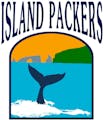
WHALE AND WILDLIFE CRUISES

WHALES & WILDLIFE YOU COULD SEE
28 species of whales and dolphins have been identified within the waters of the Channel Islands National Marine Sanctuary of southern California. On whale and wildlife cruises it is possible to see Gray Whales, Humpback Whales, Blue Whales and Minke Whales. As well as Orca Whales, Common Dolphin, Risso’s Dolphin, Bottlenose Dolphin, Pacific White Sided Dolphin and Dall’s Porpoise.
TWO WHALES SEASONS
On all of Island Packers’ trips to the Channel Islands we cruise with an eye out for wildlife, especially everyone’s favorites, whales and dolphins. There are two seasons each year where we specifically go out into the waters of California’s Santa Barbara Channel and the Channel Islands National Marine Sanctuary. There we view the larger of the marine mammals, the Pacific Gray Whales (Winter) and Humpback and Blue Whales (Summer).
PHOTO GALLERY

ADDITIONAL INFORMATION
- Skip to global NPS navigation
- Skip to this park navigation
- Skip to the main content
- Skip to this park information section
- Skip to the footer section

Exiting nps.gov
Alerts in effect, whale watching.
Last updated: May 26, 2016
Park footer
Contact info, mailing address:.
1901 Spinnaker Drive Ventura, CA 93001
805 658-5730
Stay Connected
Ecotours and Scientific Consulting

WELCOME
Welcome to Whales & Co., your destination for eco-friendly whale watching tours. Join our crew for an unforgettable experience at the Channel Island National Marine Sanctuary off Anacapa Island.
Come and share our love for the Oceans and enjoy a great day at Sea onboard our Research Vessel. Spend half day off Anacapa Islands with your family and friends to d iscover the beauty of our Whales and Dolphins or spoil yourself with our tasty snacks and wine selection while cruising at Sunset.
Our tours are designed with your Enjoyment, Comfort and Safety in mind. With room for private parties up to 6 passengers, treat yourself with an adventure in the World Whale Heritage waters of the Santa Barbara Channel.

VISITING ADDRESS: CONTACT US: INFORMATIONS: POLICIES & DISCLAIMERS
Whales & co. llc 3600 harbor blvd. oxnard, ca 93035 united states of america, [email protected] , research project, cancellation policy, privacy policy, accessibility.
This website uses cookies to enhance user experience on our website. Learn More Accept
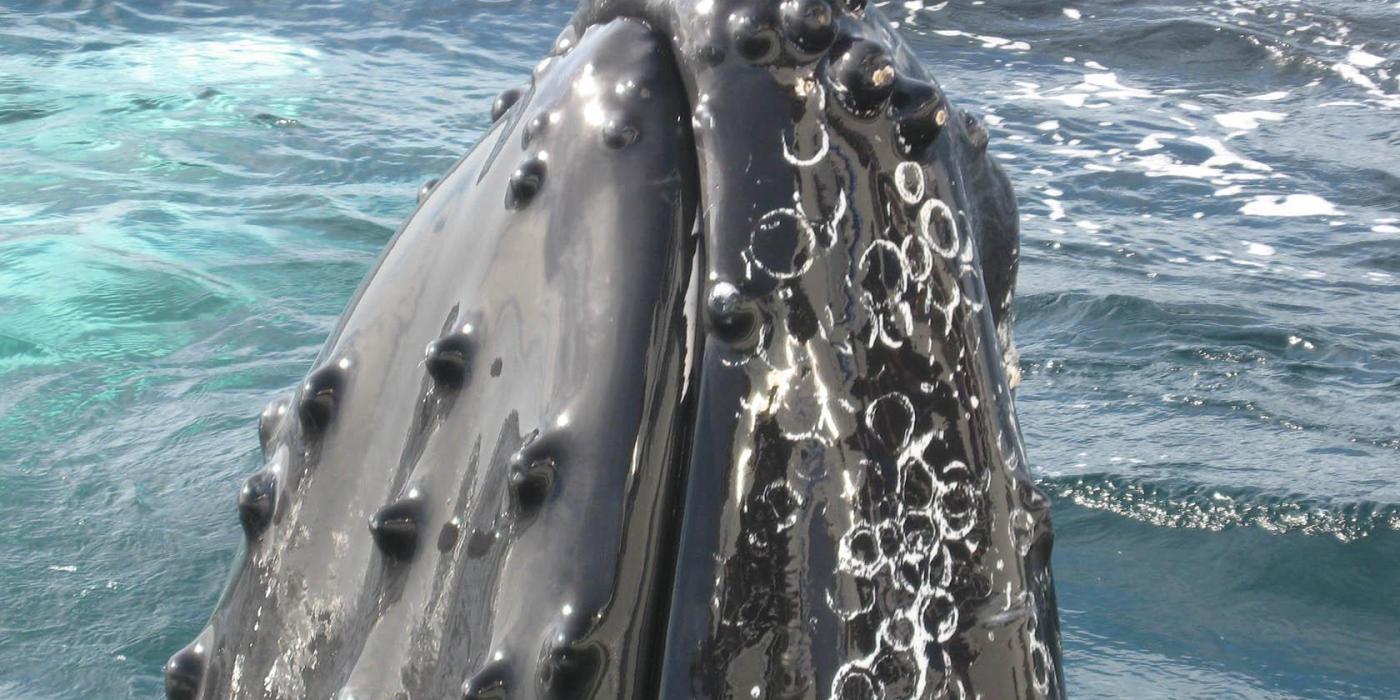
Whale Watching
Oxnard’s Guide to Observing the Ocean’s Gentle Giants
Photo by Aaron Boyd
Get the NEW Visit Oxnard Visitor Guide!
It's here! Request your free copy of the NEW 2024-2025 Visit Oxnard Visitor Guide today.
Witness the ocean's majestic giants in the Santa Barbara Channel, designated as a Whale Heritage Area by the World Cetacean Alliance, right off the shores of Oxnard.
Why Go Whale Watching in Oxnard?
Whale Watching in and near Oxnard is an experience like no other. Whether you're planning a family day, an outing with friends or a solo adventure, a whale-watching excursion in Oxnard is a great way to observe these majestic creatures.
When is the best month to go whale watching in Oxnard?
From mid-to-late-December through mid-March are the most common sightings of gray whales. In late fall, gray whales start migrating from the Arctic and make their way down to Mexico to give birth. Then in late winter and early spring, the gray whales and their calves migrate back up to their feeding grounds in the Arctic. They pass right through the Channel Islands area during both trips.
You'll see blue and humpback whales during the summer, from around mid-May to mid-September, when the ocean up-welling brings rich plumes of plankton for these visitors to feed on. And, it's common to see dolphins throughout the year.
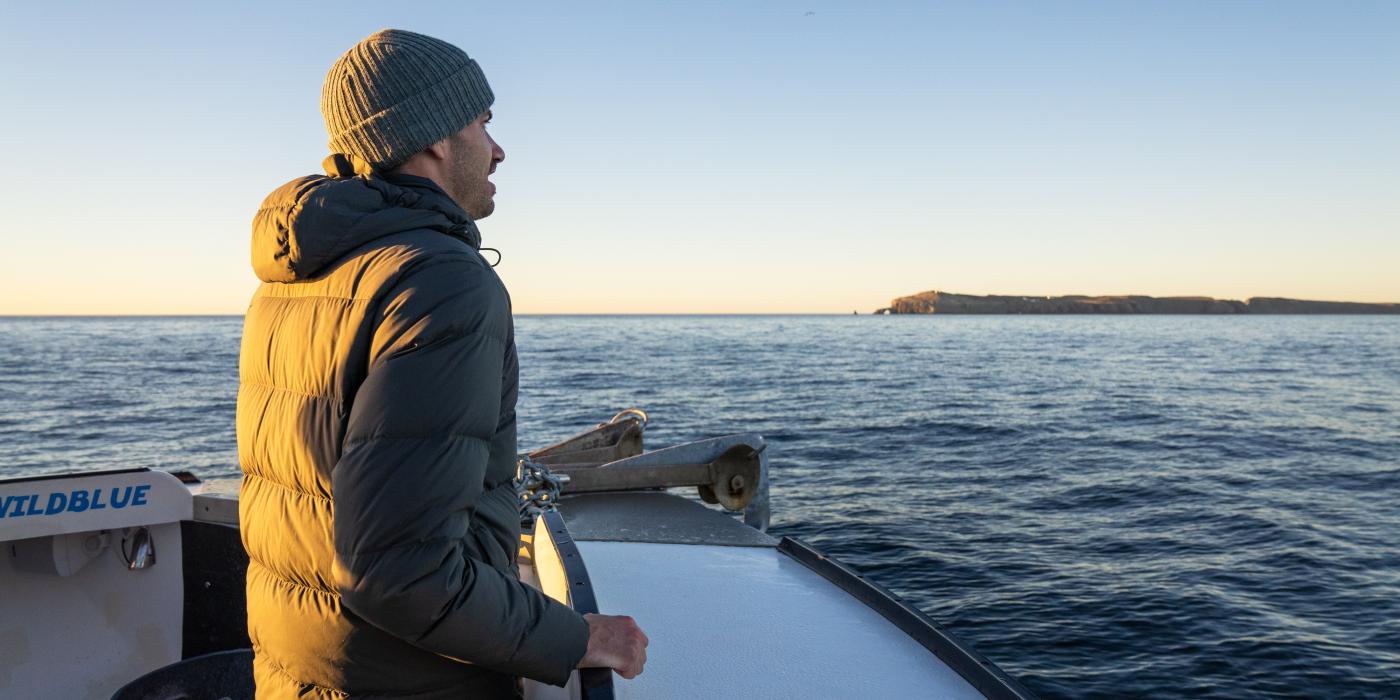
Whale Heritage Area
Just off the coast of Oxnard, the Santa Barbara Channel has proudly attained the esteemed status of being the 9th Whale Heritage Area in the world
Santa Barbara Whale Heritage Area
Just beyond Oxnard’s Channel Islands Harbor, the Santa Barbara Channel serves as a thriving haven for diverse marine species. Port Hueneme Canyon, a deep ocean trench off the coast of Oxnard, is a vital hub and breeding ground for marine life, making Oxnard an ideal destination for wildlife enthusiasts.
The recognition and accreditation provided by the Whale Heritage Area (WHA) program established by the World Cetacean Alliance and World Animal Protection highlights the region's commitment and dedication to the coexistence between cetaceans and humans, promoting thriving marine habitats and sustainable practices. Santa Barbara Whale Heritage Area partners are dedicated to promoting responsible ecotourism, enhancing ocean education, advancing conservation efforts and honoring the unique cultural connection to whales, dolphins, and porpoises.
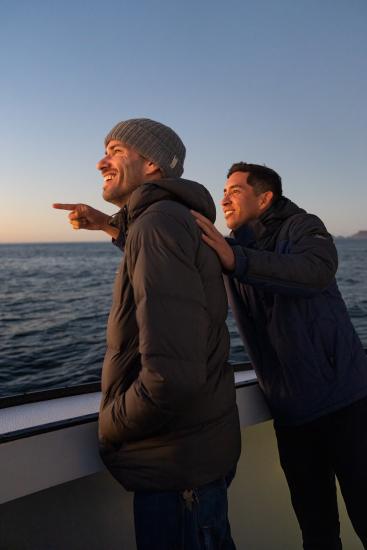
wildlife viewing/dolphins
Did you know that 1/3rd of all whale species in the world have been spotted in these rich waters? In the Santa Barbara Channel, there's a high diversity of large whales with 27 species sighted, including gray, blue, humpback, Bryde's, Fin, minke, sperm, and pilot whales. But it's not just whales that call this area home. According to the National Park Service, there are also orcas, Dall's porpoises and bottlenose dolphins.
Considered a biological productivity indicator species (dolphins consume 10 lbs of fish a day to survive!), massive pods of dolphins dance in the abundant waters, a true testament to the Channel's prevalence of ocean life. Keep your eyes peeled for these playful creatures!
Tips to Plan the Best Whale Watching Excursion:
- Wear the right gear. Bring a jacket and dress in layers since tours can take place in the early morning. Wear comfortable flat shoes.
- Check the forecast. Check the weather and marine forecast on the day of your trip. Ask about the cancellation policy for extreme weather.
- Don't miss the boat because you're late. Give yourself plenty of time to find parking, get your ticket and board the boat.
- Binoculars : You'll get an up-close view of these beautiful whales.
- Camera : Bring a waterproof camera or case if you have one.
- Sunscreen & lip balm : Avoid getting a sunburn while you're on your trip.
- Sunglasses : Bring polarized lenses if you have them to avoid the glare from the waves.
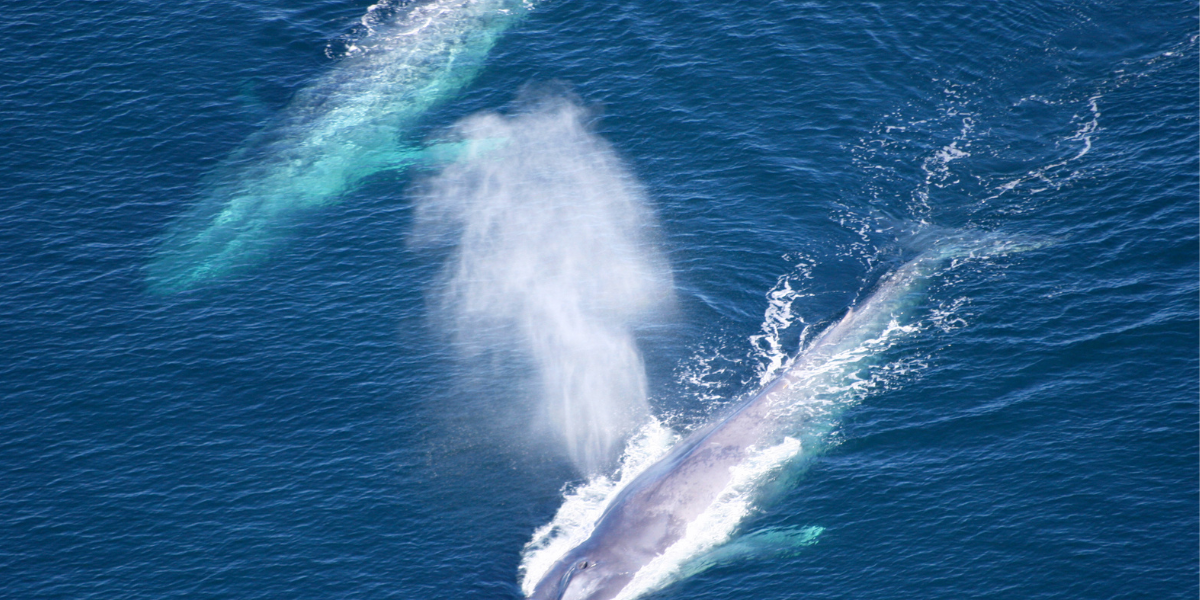
Ocean Adventure Operators
Explore vibrant marine life, enjoy unforgettable water activities, and dive into the heart of the ocean's beauty!
Where is the best place to see whales in Oxnard?
The Santa Barbara Channel off the coast of Oxnard is prime whale watching territory. There are plenty of options when it comes to booking tours for wildlife viewing. Here's a list of Oxnard's best wildlife and adventure tour operators.
Whale Watching & Adventure Sail Operators
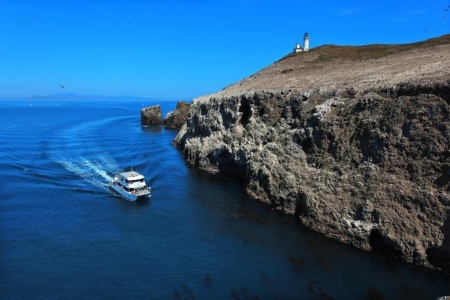
Island Packers
Experience Whale and Wildlife cruises during Summer and Winter and trips to the Channel Islands with Island Packers. Whale Watching trips are usually 3.5 hours, do not land at the islands and return to Channel Islands Harbor in Oxnard.
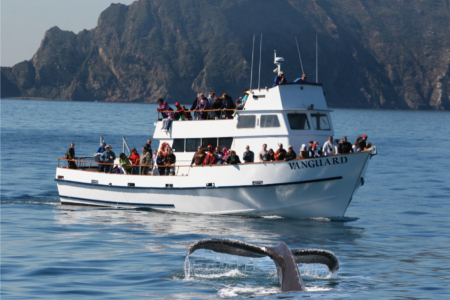
Channel Islands Whale Watching
Channel Islands Whale Watching offers breathtaking excursions embarking from the pristine waters of the Channel Islands Harbor in Oxnard. The chartered boats can host around 25 to 55 guests. Visitors can often see whales, dolphins and sea lions with this vendor.
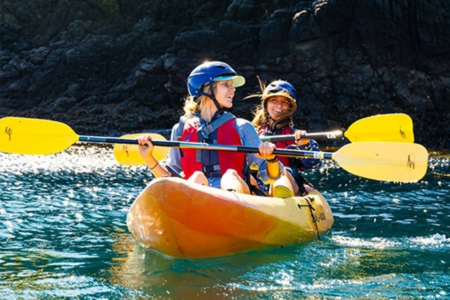
Channel Islands Expeditions
Experience the Grey Whale migration! Tours depart from Channel Islands Harbor. This is a non-landing trip to Anacapa Island and the best way to see ocean wildlife and flowers in full bloom. Guests are also able to bring lunch, snacks, and beverages.
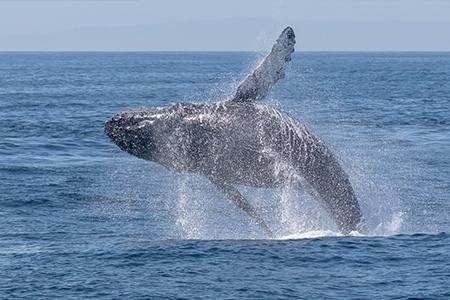
Whales & Co. Eco Tours
Spend a day on the water in the Channel Island Marine Sanctuary off Anacapa Island aboard the RV Tortuga ship. Alongside scientists you will learn all you want to know about whales and dolphins, enjoy the scenery paired with delicious food and wine curated by the sommelier onboard, or plan a day of your own. Whales & Co. Ecotours can help you organize your special occasion tailored just for you.
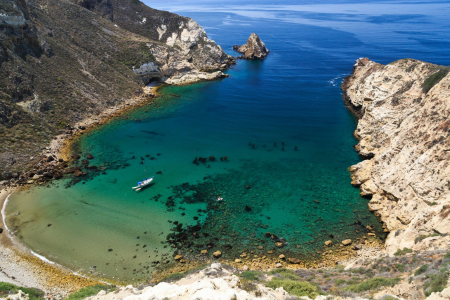
Doug's Channel Island Tours
Enjoy a private tour of the waters around the Channel Islands. The chartered boat service accommodates up to 6 passengers and their gear. From fishing and spearfishing, to whale watching, cave kayaking, surfing, paddle boarding, and on the islands hiking trips, call today to customize your tour.
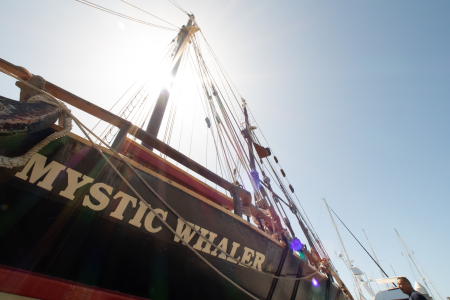
Central Coast Adventures
CCOA is committed to making engaging experiential education and the Santa Barbara Channel more accessible to Ventura County communities. CCOA's flagship resource, the 110-ft schooner Mystic Whaler, is the perfect medium for exploring adventure-inspired learning through sailing and the sea. Check them out in the Channel Islands Harbor.
And Sportfishing too!
Why go sportfishing in Oxnard? For the following reasons...
- Extremely Productive Fishing Grounds. Oxnard's sportfishing operators provide access to renown fishing around the Channel Islands. This area produces a wide range of fish including world record Halibut, White Seabass, Sheephead, Barracuda, Yellowtail, Rockfish, Lingcod, and Salmon, along with the surface fish which includes, Calico bass, Barracuda, Sand bass and more! In the off season, Sand Dab fishing is excellent.
- Knowledgeable and Enthusiastic Captains. At the helm of our fishing charters, you'll find captains who know are experts in navigating the thriving marine habitat that surrounds Anacapa Island, Santa Cruz Island, Santa Rosa Island, San Miguel Island, and San Nicolas Island, as well as the coastal waters between Santa Barbara and the Ventura County line near Malibu.
- Certified IFGA Weigh Stations. World Record fish are a possibility! With Channel Islands Sportfishing, there have been 4 recorded California Halibut records and 1 White Seabass. There have been several unrecorded catches as well.
Sportfishing Operators
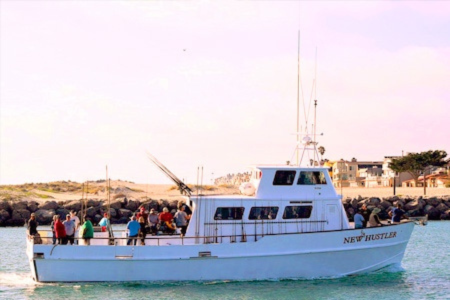
Hook's Landing
Hooks Landing is your gateway to thrilling sportfishing adventures in the Pacific Ocean. With experienced guides and top-notch equipment, they cater to anglers of all levels, offering memorable deep-sea excursions to reel in prized catches like tuna and marlin. Experience the excitement of fishing against the backdrop of California's stunning coastline.
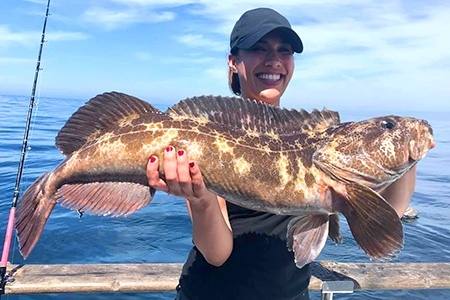
Channel Islands Sportfishing
Discover the ultimate fishing adventure with Channel Islands Sportfishing. Their expertly guided deep-sea excursions offer thrilling encounters with prized catches like tuna and halibut against the backdrop of California's scenic Channel Islands. Join them for an unforgettable day on the water. They offer seasonal whale watching, too!
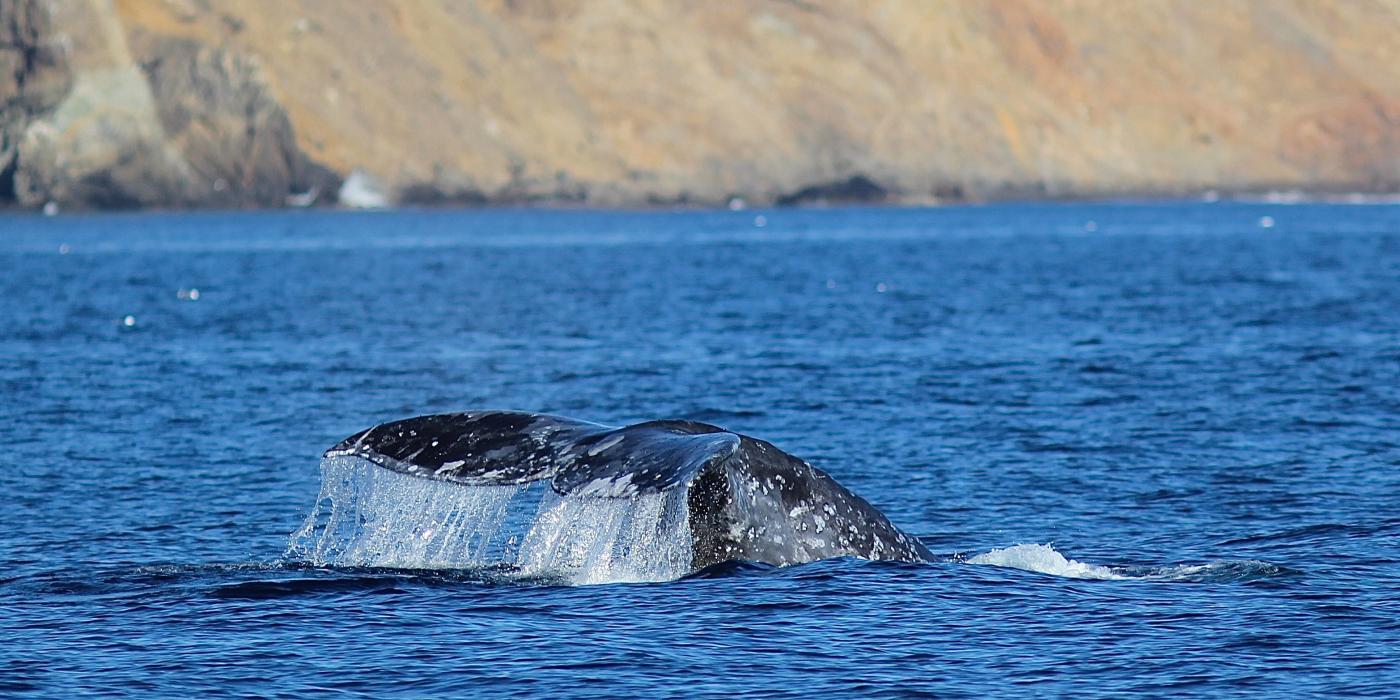
Celebration of the Whales
An annual festival at the (whale's) tail end of winter, embracing the splendor of the sea's giants
Celebration of the Whales Festival
This annual festival, which typically takes place at the tail end of winter whale watching season, has become a staple in Oxnard's Channel Islands Harbor after having been in existence for more than 25 years. Against the picturesque backdrop of California's coastline, this family-friendly festival serves as a jubilant homage to the majestic creatures that grace these waters. Attendees are invited to immerse themselves in a myriad of activities, from educational seminars on marine conservation to thrilling whale-watching excursions led by seasoned experts. The festival pulsates with energy as visitors gather to celebrate the diverse marine ecosystem of the Santa Barbara Channel and the awe-inspiring presence of its resident whales.
Oxnard Maritime Museum
At the Celebration of the Whales Festival in Oxnard, the Maritime Museum takes center stage, offering an immersive journey into the world of marine life and maritime history. Through dynamic exhibits and interactive activities, visitors of all ages can explore the wonders of the ocean ecosystem, gaining a deeper appreciation for the majestic whales that inhabit it. From guided tours highlighting the region's maritime heritage to workshops focused on marine conservation, the Maritime Museum provides engaging experiences that educate and inspire. Expert presentations by marine biologists and environmentalists underscore the importance of protecting our oceans, making the museum a vital hub for learning and community engagement during this annual celebration.
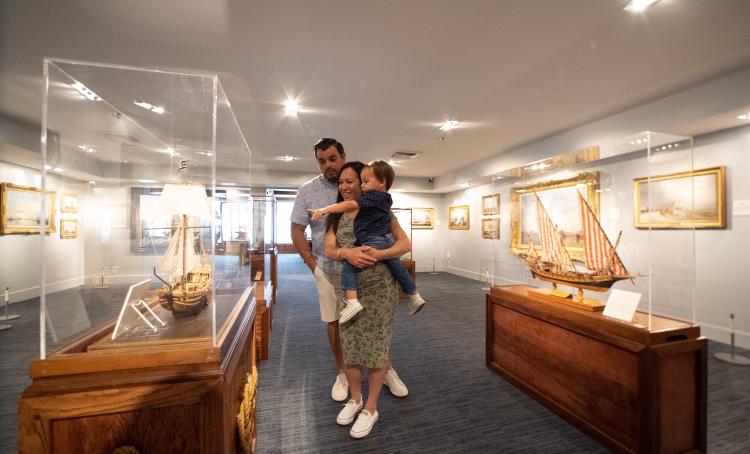
Related to Whale Watching
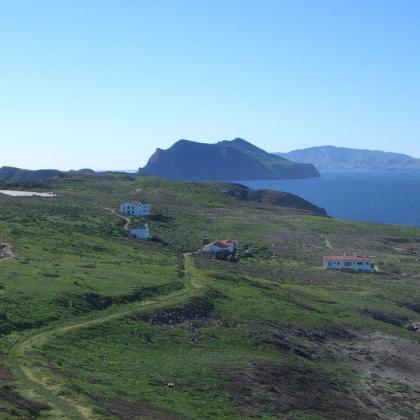
The Channel Islands National Park affords a glimpse at what California likely looked like years ago. If you yearn for low-impact adventure and have a taste for archaeology, history, hiking, birding, kayaking, snorkeling, or the serenity of a truly...
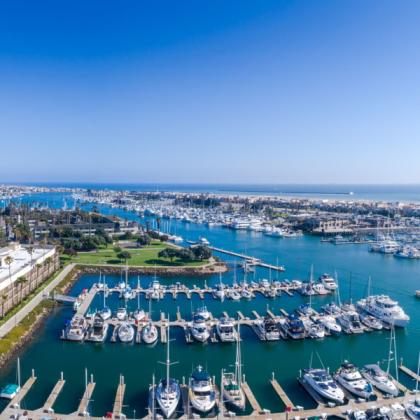
Welcome to the captivating Channel Islands Harbor, your portal to the enchanting Channel Islands National Park! This destination is a true treasure trove, designed for those seeking an idyllic setting to enjoy a leisurely picnic or embark on scenic...
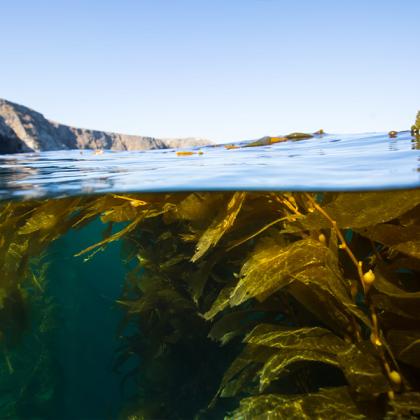
Just off the coast of Oxnard, await the waters that swirl around the five islands within Channel Islands National Marine Sanctuary. Channel Islands National Marine Sanctuary protects 1,470 square miles of ocean waters around the Northern Channel Islands:...
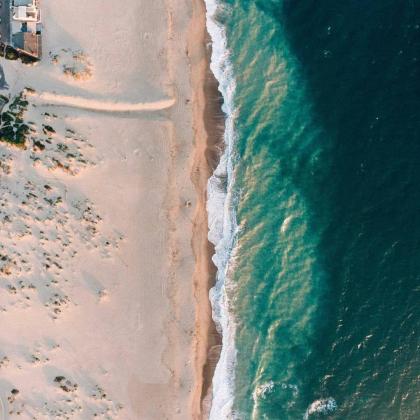
West Coast is the best coast, and Oxnard’s beaches rock the beautiful waves and sandy shores without the crowds. Explore Oxnard Beach Park with its paved boardwalk, classic palms, and tons of attractions. Plan a picnic, rent a bike, or spike a volleyball...
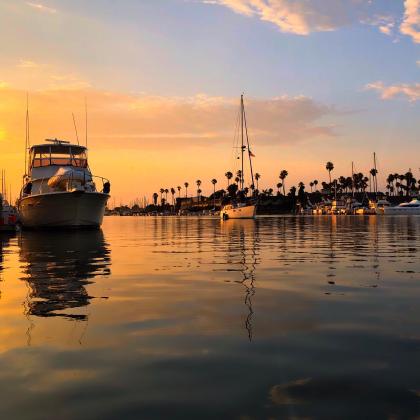
With pristine weather year-round, visit Oxnard any day of the week for a boating adventure.
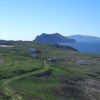

Where to stay
Planning your stay in Oxnard? Choose from a delightful selection of accommodations tailored to your preferences. For those craving beachfront luxury, consider the serene oasis of Zachari Dunes at Mandalay Beach, offering spacious rooms, upscale amenities, and captivating ocean vistas. Hampton Inn at Channel Islands Harbor promises a convenient and comfortable stay, with easy access to the harbor's attractions and pristine beaches. Whether you seek seaside serenity or harbor-side charm, Oxnard's hotels provide the perfect retreat for your coastal adventure, ensuring relaxation, convenience, and unforgettable memories.
WHALE WATCHING GUIDE CONCLUSION
We hope you found this guide to whale watching in Oxnard helpful. We'd love to see your pics! Find us on Instagram at @visitoxnardca and tag #VisitOxnard to share your pictures of whales and other wildlife. Visiting Oxnard for the first time? Here's how to plan your visit , including where to stay and the best things to do.
Be the first to get insider news and event updates!
Get the latest on everything Oxnard

Dolphin Adventure & Whale Watching – Public
Quick Details
- Hour Glass Duration: 90 minutes
- User Ages: All ages
- Info CALL (805) 465-6676 : We're currently only running trips in Santa Barbara. Call to book or go to www.celebrationsb.com
Embark on an unforgettable adventure with our Dolphin Tour departing from the picturesque Channel Islands Harbor in Oxnard. Join us as we cruise the pristine waters along the Southern California coastline, offering a front-row seat to nature’s wonders.
Marvel at the playful dolphins dancing in the waves, bask in the charm of graceful sea lions, and witness the sky come alive with the beauty of marine birds. During certain seasons, we may even be graced by the majestic presence of whales, adding an extra layer of excitement to your maritime journey.
This extraordinary experience is not just tailored for visitors; it’s a hidden gem for locals seeking to reconnect with the natural wonders of their own backyard. As the gentle sea breeze caresses your face, immerse yourself in the beauty of Southern California’s coastal treasures.
Join us for a Dolphin Tour, where every moment is a brushstroke painting a vivid picture of the vibrant marine life that calls these waters home. Book your spot now and let the magic of the Channel Islands Harbor and its aquatic residents become an indelible part of your memories.
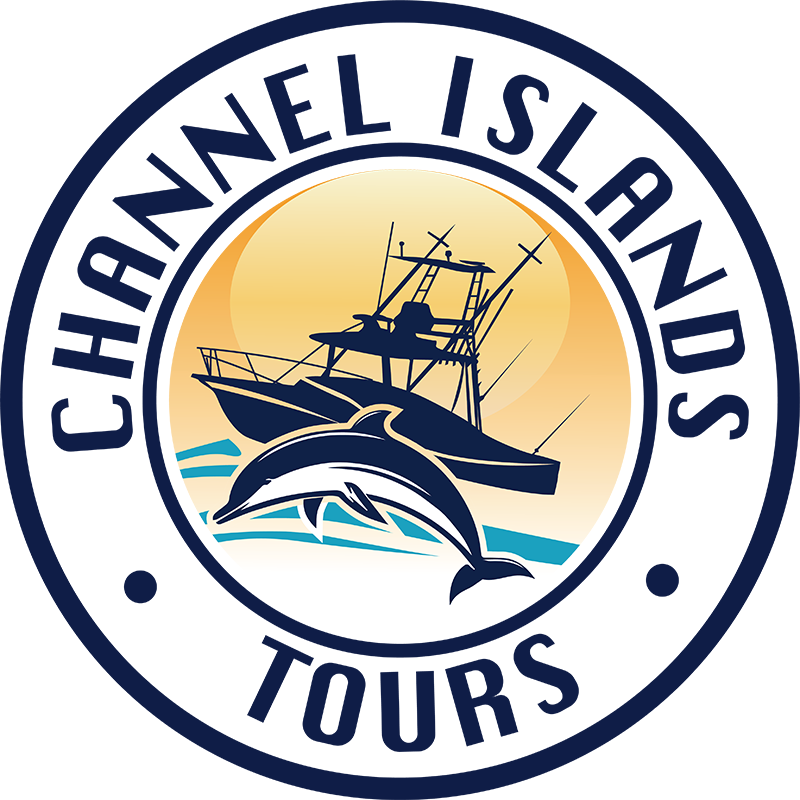
Channel Islands Private Charter Boat Excursions
Book your adventure today: (805) 450-7757.
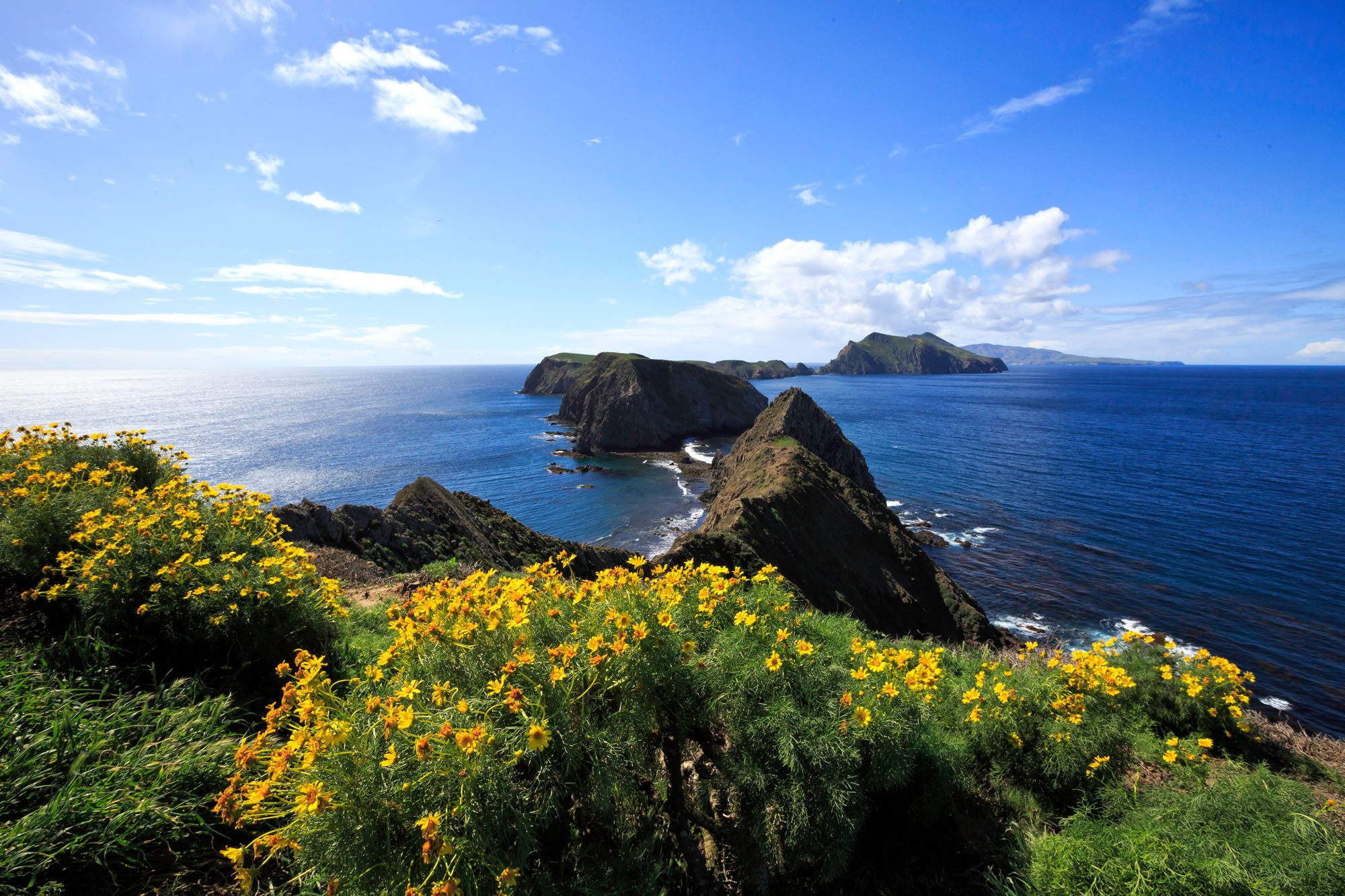
Discover the Channel Islands with us!
The waters from Ventura County to the Channel Islands have a lot to offer us. The discoveries and adventures at the islands are remarkable too. Our Channel Island adventure boat charters gets you up close with all the Channels Islands have to offer.
Whether you’re interested in fishing, whale watching, ocean picnics in secluded coves, viewing pods of dolphins or seeing the largest and deepest sea cave in the world – we get you connected with a customized trip just for your party.
Connect with us
Contact info.
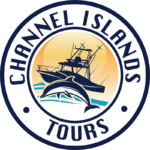
Channel Islands Tours Marine Emporium Landing 3600 Harbor Blvd Oxnard , CA 93035 Questions and Info (805) 450-7757 info@gotourchannelislands.com
Our Hours Open 7 Days A Week
- Name This field is for validation purposes and should be left unchanged.
Map & Directions to the Boat
Channel Islands Tours Marine Emporium Landing 3600 Harbor Blvd Oxnard , CA 93035 Questions and Info (805) 450-7757
info@gotourchannelislands.com
- Map to Boat
© Copyright 2024 Channel Islands Tours All Rights Reserved.

Dive into the wonders of the Santa Barbara Channel Whale Heritage Area with our Free Membership.
Experience These Magnificent Creatures as They Are Meant to be Seen, Respectfully and In The Wild!
The santa barbara channel is one of earth's premier whale watching destinations. come experience these amazing creatures in the wild..

The Importance of Whale Heritage Areas
We are excited to announce the Santa Barbara Channel has become the 9th Whale Heritage Area in the world. This designation highlights the region’s commitment to promoting responsible ecotourism, providing more ocean educational opportunities, supporting on-going research and conservation efforts, and honoring the timeless cultural connection we have to whales, dolphins and porpoises.
You Can Make a Difference
Help create a world where cetaceans are only found in the wild, are respected and fully protected, and live in sustainable habitats and in harmony with people everywhere.
Our Valued Partners

“Whale Heritage Areas are becoming the gold standard for responsible whale watching destinations worldwide. But they also have so much more to offer. By interweaving natural and cultural elements and placing communities at their very heart, these sites will become places where people respect, celebrate and protect cetaceans and their habitats long into the future.”
Jean-Michel Cousteau Honorary President,
World Cetacean Alliance
Founder, Ocean Futures Society

Visit the Channel Islands
Channel islands national park & national marine sanctuary.
Just 11 miles from the Channel Islands Harbor, yet worlds apart, Channel Islands National Park encompasses five remarkable islands (Anacapa, Santa Barbara, Santa Cruz, San Miguel and Santa Rosa) and their ocean environment, preserving and protecting a wealth of natural and cultural resources. Isolation over thousands of years has created unique animals, plants, and archaeological resources found nowhere else on Earth and helped preserve a place where visitors can experience coastal southern California as it once was.
The park, often referred to as the Galapagos of North America, is surrounded by the Channel Islands National Marine Sanctuary, a destination to project species, sensitive habitats, shipwrecks and maritime heritage artifacts.
Between the National Park and the Sanctuary, this stretch of the Pacific off the Ventura County coast offers plenty of adventures for the outdoor enthusiast – camping, hiking, kayaking, sailing, snorkeling, diving, sportfishing, whale watching, and more. If you are seeking to discover this uncrowded natural paradise, look no further than starting your adventure at the Channel Islands Harbor.
Get to the Channel Islands National Park and Explore
Island Packers Cruises is the official concessionaire to the Channel Islands National Park and offers trips to each island, depending on the season. Once you reach the islands, take a scenic hike, with pristine views and opportunities to see native plants , wildlife , birds , and natural features and ecosystems. There’s also ample opportunities to learn about the National Park by participating in interpretive programs . If you can’t see it all and one day, and chances are you can’t, there’s plenty of camping opportunities.

Kayak the Channel Islands
Enjoy a kayaking adventure at Anacapa Island with C hannel Islands Expeditions aboard the Sunfish, a custom built supported kayak vessel. With the Sunfish, your tour starts at one end of the island then you are picked up at the other end. You will not have to fight the wind, current or repeat the same sights on the way back.

Sail the Channel Islands
Sail Channel Islands offers luxury or economy charters for up to six people. Your best bet to see the Channel Islands in all its glory via sail boat is to charter a full day trip. The full day trip includes the opportunity to kayak, snorkel, and you can even try your hand at navigating the boat!

Whale Watching
If you’re going whale watching, you don’t have to look any further than the Channel Islands Harbor. Whale watching excursions out of the Harbor will bring you closer to the whales and the beautiful Channel Islands National Park.
Islands Packers Whale Watching tours depart for a 3 to 3 ½ hour cruise along the Santa Barbara Channel. If you increase your trip from a half day to a full day, you can enjoy a landing on the Channel Islands at Anacapa Island or Santa Cruz Island.
Channel Islands Whale Watching offers breathtaking excursions through the waters surrounding Channel Islands National Park and the National Marine Sanctuary. Hop aboard Ranger 85 with Captain Frank, who began his career at sea in 1976 and has been offering eco tours since 1990. Captain Frank offers AM and PM cruises.
Channel Islands Expeditions also offers whale watching excursions for a group of guests (up to 16).

Sportfishing
Fishing in and around the Channel Islands is second to none. Fortunately, there are two well established sportfishing companies in the Harbor that can meet any angler’s needs. Depending on the season, expect to catch calico bass, white sea bass, halibut, sand bass, barracuda, yellowtail, rockfish, and lingcod while enjoying breathtaking views of the Channel Islands.
Channel Islands Sportfishing offers a variety of trips available including local half-day trips, ¾ day island trips and overnight outer island trips.
Hook’s Landing ’s sportfishing fleet will take you around the outer Channel Islands to Santa Barbara, Santa Rosa, San Miguel and Santa Cruz Islands or to local reefs with bass, rockfish, and halibut abound. They offer a variety of trips to meet your needs, including half-day trips, ¾ day trips, and overnight trips.

YOUR ADVENTURE AWAITS!
The condor express in santa barbara has been creating amazing whale watching experiences for over 35 years. come aboard for the experience of a lifetime, condor musical cruises.

Whale Watching at the Whale Heritage Site

WHAT OUR PASSENGERS ARE SAYING

WHAT YOU'LL ENCOUNTER
Meet the array of wildlife you could see while out on the open ocean.

START PLANNING YOUR NEXT ADVENTURE

PRIVATE CHARTERS
Looking for your own personal adventure? Book your own private whale watch, celebration of life, or party cruise!
CHECKOUT OUR GALLEY
We're one of the only whales watching boats along California's coast that has a full galley with breakfast, lunch , and beverage options. If you forget to grab a bite to eat before your trip, no worries, we've got you covered! Check it out below.
OUR DEDICATED CREW

HIROKO OWNER

DAVE CAPTAIN

DEVIN CAPTAIN

KELLY CREW
Samantha crew, bob photographer.

HIROKO OWNER

THE CONDOR EXPRESS
71-foot-long, 26.5-foot-wide, quad-jet-powered catamaran capable of cruising at 28+ knots
Powered by four BRAND NEW, low emission, 700 hp Scania Diesel engines.
Twin wave piercing hulls, feature a modified hydrofoil wing that produces an extremely smooth and stable ride.
U.S. Coast Guard certified and insured to carry up to 127 passengers
Features a large and luxurious teak-paneled cabin. Expansive windows allow viewing from inside the cabin, seating for ~60 persons, and 2 Large plasma screen TV's allow passengers to see boats location throughout the channel.
Full galley with breakfast and lunch menu.
Complete bar with adult drinks such as cocktails, beer, and wine.
Upper sundeck seating offers unobstructed animal viewing and sight seeing
Huge raised bow allows passengers a up-close look at the wildlife=, specifically the dolphins! Be sure to look down when hanging out on the bow, common dolphins love to bow ride!
Three full-size rest rooms aboard
High-tech Bose audio system projects captain's voice throughout the entirety of the boat.
A large aftdeck provides lots of room for dancing to a DJ or a live band. There is plenty of space for passengers, or educators and researchers to work


NOTICE You are using an outdated browser . Some features of this website (and many other websites) may not work correctly with your current web browser. We strongly urge you to upgrade your browser to improve your web browsing experience.

Blue Whales
Balaenoptera musculus.
The Blue Whale ( Balaenoptera musculus ) is a marine mammal belonging to the suborder of baleen whales (called Mysticeti). At 30 metres (98ft) in length and 180 metric tons (200 short tons) or more in weight, it is the largest known animal to have ever existed.
Long and slender, the blue whale's body can be various shades of bluish-grey dorsally and somewhat lighter underneath. There are at least three distinct subspecies: B. m. musculus of the North Atlantic and North Pacific, B. m. intermedia of the Southern Ocean and B. m. brevicauda (also known as the pygmy blue whale) found in the Indian Ocean and South Pacific Ocean. B. m. indica , found in the Indian Ocean, may be another subspecies.
Blue Whale as with other baleen whales, diet consists almost exclusively of small crustaceans known as krill. The species of this zooplankton eaten by blue whales varies from ocean to ocean. An adult blue whale can eat up to 40 million krill in a day. The whales always feed in the areas with the highest concentration of krill, sometimes eating up to 3,600 kilograms (7,900 lb) of krill in a single day.
Blue whales were abundant in nearly all the oceans on Earth until the beginning of the twentieth century. For over a century, they were hunted almost to extinction by whalers until protected by the international community in 1966. A 2002 report estimated there were 5,000 to 12,000 blue whales worldwide, located in at least five groups. More recent research into the Pygmy subspecies suggests this may be an underestimate. Before whaling, the largest population was in the Antarctic, numbering approximately 239,000 (range 202,000 to 311,000). There remain only much smaller (around 2,000) concentrations in each of the North-East Pacific, Antarctic, and Indian Oceangroups. There are two more groups in the North Atlantic, and at least two in the Southern Hemisphere.
Back to Wildlife
Type of Wildlife in the Channel Island Region
There are several different species of whales you are likely to encounter on one of our trips. California Gray Whales, Humpback Whales, Blue Whales, Finback Whales and Orca Whales (Killer Whales) are common sightings in the waters surrounding the Channel Islands. Additional wildlife includes seals, sea lions, dolphins and a rich variety of bird life; some of which are endangered and protected.
Take the adventure of a lifetime with Channel Islands Whale Watching!

The Top 15 Spots To Watch Whales in the US
Posted: April 30, 2024 | Last updated: April 30, 2024
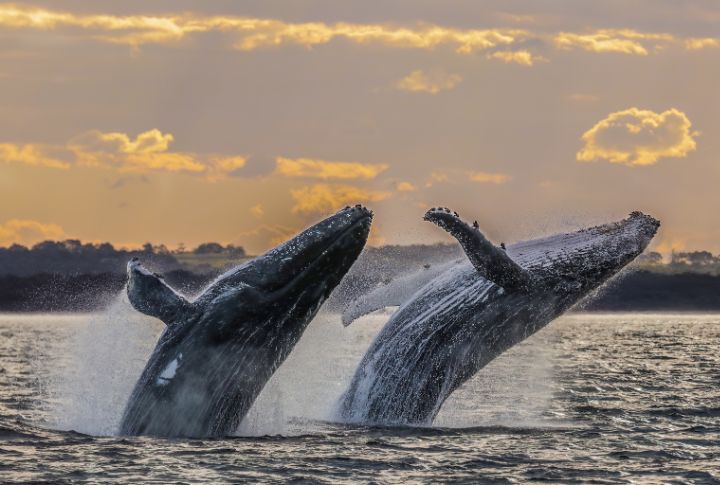
Whale watching is a thrilling experience that allows you to observe these incredible sea animals in their natural habitat. The United States is home to some of the best whale-watching spots in the world, which give you an unforgettable encounter with these marine mammals. In this post, we have included 15 whale-watching spots in the US for you to choose from.
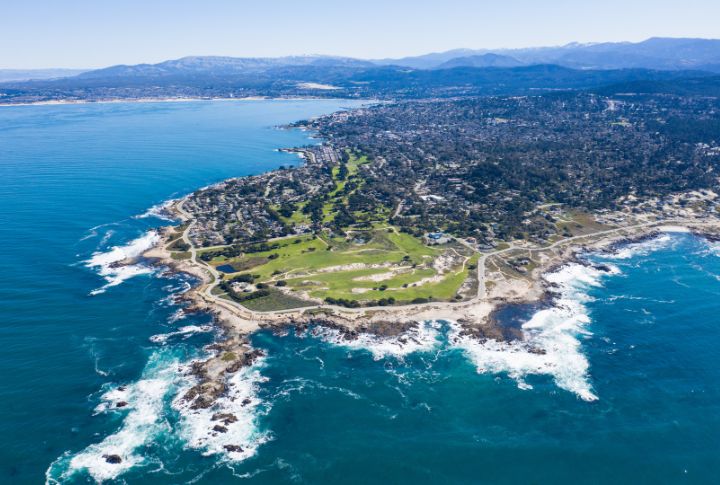
Monterey Bay, California
Monterey Bay is an excellent location for whale watching, especially for humpback and blue whales. The bay’s nutrient-rich waters attract these creatures, providing ample opportunities for breathtaking sightings. Whale-watching tours offer close encounters, making it an unforgettable experience for nature enthusiasts.
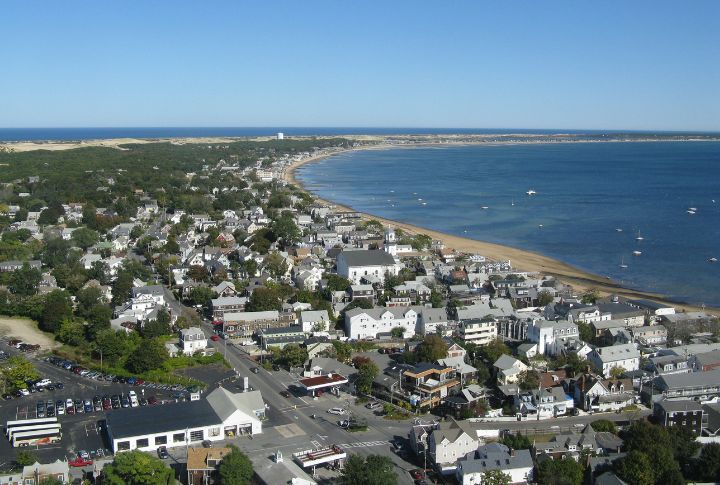
Cape Cod, Massachusetts
Cape Cod is noted for its diverse marine life, including various whale species like humpbacks, fins, and minke whales. Visitors can embark on whale-watching cruises departing from Provincetown, offering a chance to witness them breaching and spouting in their natural habitat.
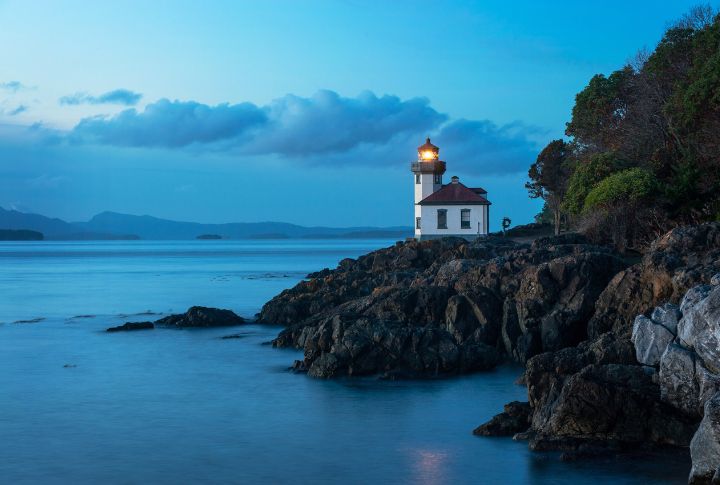
San Juan Islands, Washington
Orca whales are the main attraction in the San Juan Islands, Washington. These pristine waters are home to resident and transient orcas, making sightings common during the peak season. Guided tours provide insights into the orcas’ behavior and ecology, enhancing the experience.
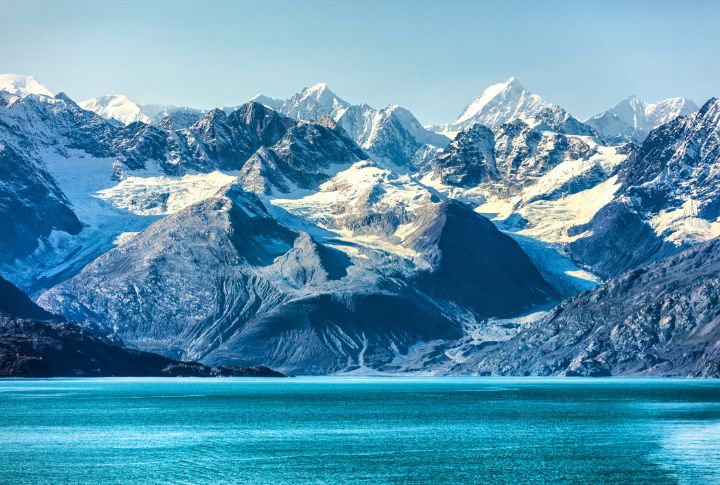
Glacier Bay, Alaska
Visitors can spot humpback whales feeding in nutrient-rich waters and other marine mammals like orcas and porpoises at Glacier Bay National Park in Alaska. The vast wilderness adds an adventurous touch to the whale-watching excursion in stunning icy landscapes.
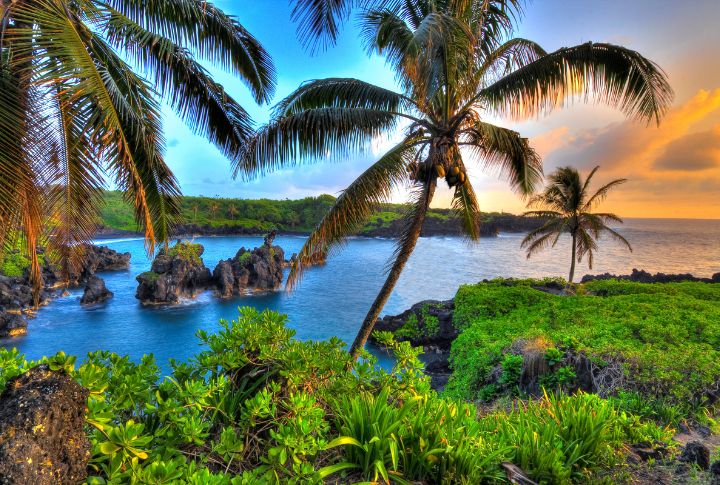
Maui, Hawaii
During the winter months in Maui, humpback whales migrate to warm Hawaiian waters to breed and calve. Catamaran cruises and guided tours allow visitors to witness these gentle giants up close, often accompanied by playful behavior.

Cape Ann, Massachusetts
Cape Ann, located north of Boston, boasts a rich maritime history and abundant marine life, including several whale species. Whale-watching tours departing from Gloucester and Rockport offer an ideal vantage point to observe humpback whales, minke whales, and even the occasional endangered right whale.

Channel Islands, California
Visitors can witness various whale species at The Channel Islands, including blue whales, gray whales, and even occasional sightings of orcas. Guided boat tours offer an intimate encounter with these magnificent creatures. Some couples go to the Channel Islands for their honeymoons or take the family on vacation.
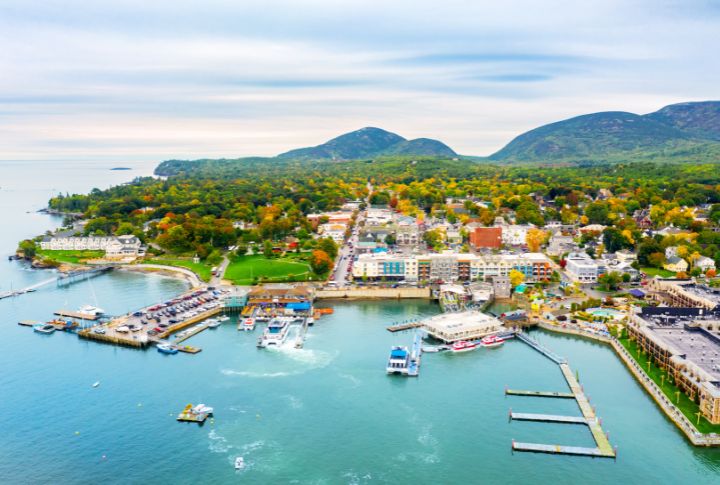
Bar Harbor, Maine
Bar Harbor is a gateway to Acadia National Park and offers excellent opportunities to see whales in the Gulf of Maine. Visitors can go on tours to see humpback, fin, and minke whales while enjoying the scenic coastal landscapes.
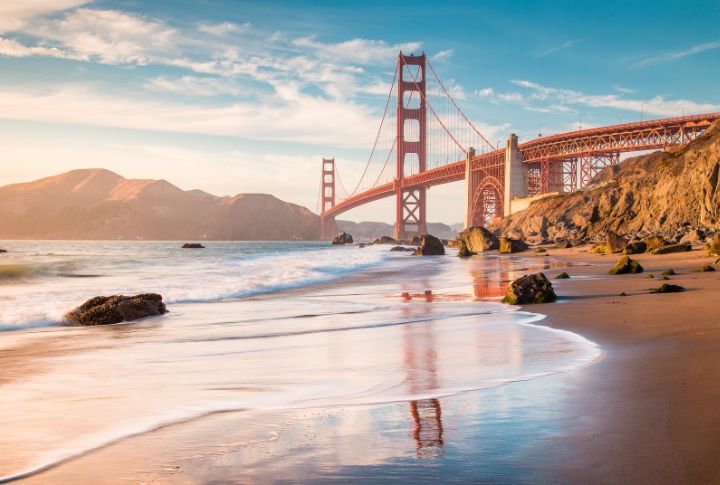
San Francisco Bay, California
Located in the Golden State, San Francisco Bay offers one of the best whale-watching experiences in the USA. The bay’s deep waters and diverse marine ecosystem attract whale species, including humpback and blue whales. Plus, the stunning backdrop of the Golden Gate Bridge adds a picturesque element to the adventure.
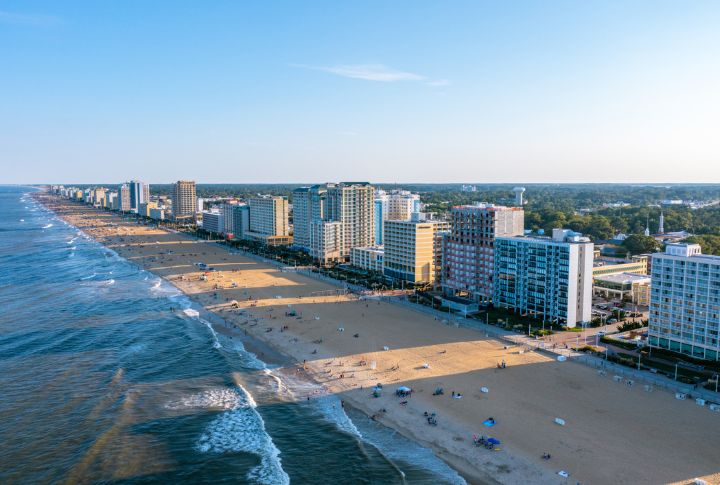
Virginia Beach, Virginia
This beach’s strategic location near the mouth of the Chesapeake Bay makes it a good spot for various whale species, including humpback and fin whales, during their seasonal migrations. The city’s beautiful beaches and ocean views make it an ideal setting for witnessing a variety of whales in their natural habitat.
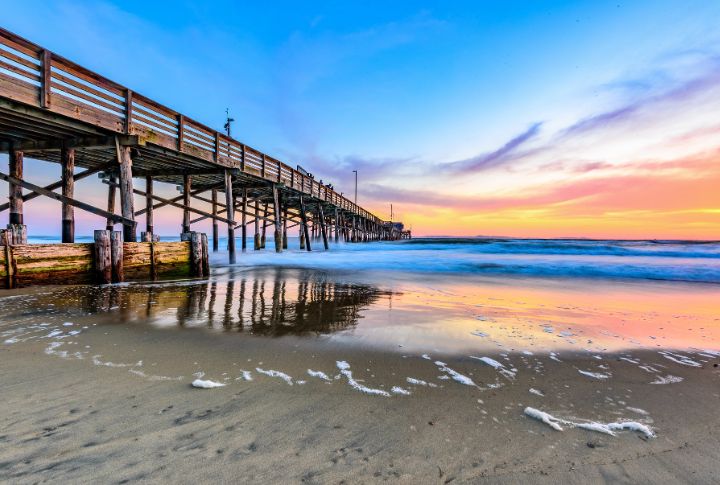
Newport Beach, California
Nestled along the Southern California coast, Newport Beach stands out as the USA’s premier destination for whale watching. Its strategic location provides access to nutrient-rich Pacific waters where humpback whales, blue whales, and other marine mammals thrive.
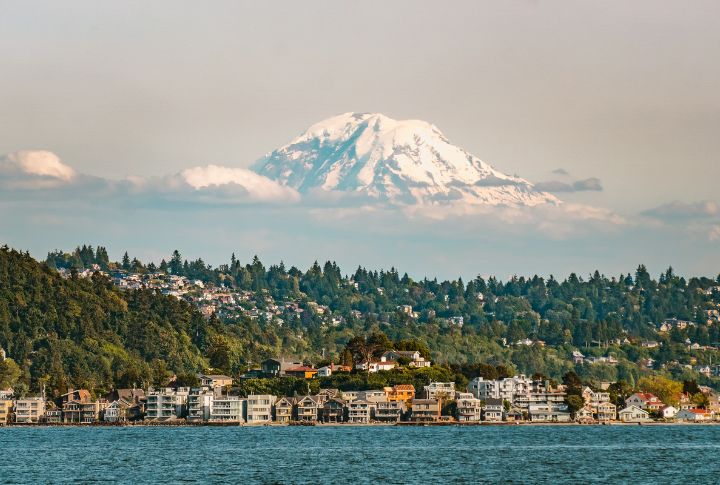
Seattle, Washington
Seattle is located near several popular whale-watching spots, such as the San Juan Islands, known for their abundant marine life and resident orca population. The calm waters of the Puget Sound provide ideal conditions for whale watching excursions, offering visitors a high chance of spotting whales.
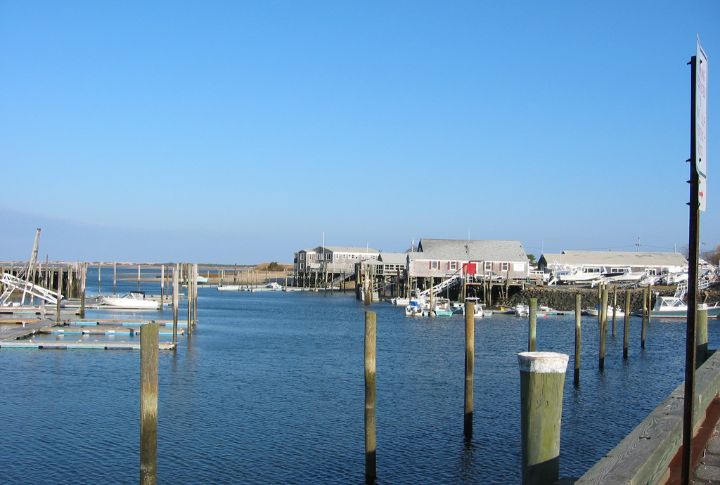
Barnstable, Massachusetts
The town is situated on Cape Cod, a prime spot for whale-watching tours as it is close to major feeding grounds for various whale species. Furthermore, the waters off the coast of Barnstable are known for being rich in marine life, making it a hotspot for whales to feed and play.
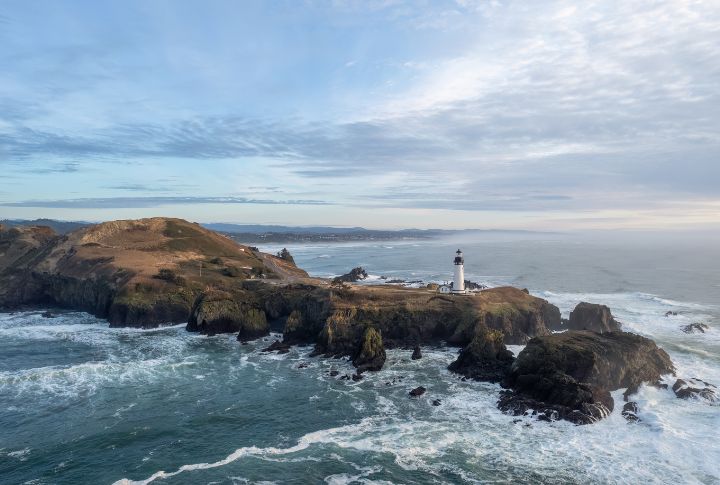
Newport, Oregon
Gray whales migrate past the Oregon coast during their annual journey. The best time to see gray whales along the Oregon Coast is from December to May. Additionally, it’s home to the Oregon Coast Aquarium, where visitors can learn about marine animals in the Pacific Northwest, including whales.
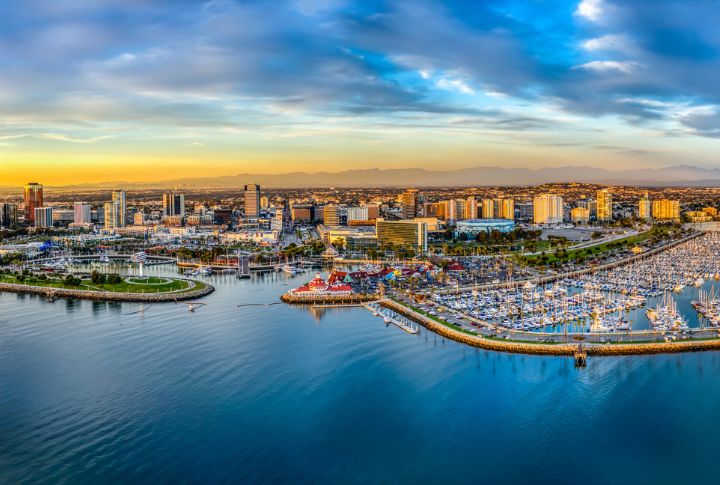
Long Beach, California
This city on the Southern California coast is a popular migration route for several species of whales, including gray whales, blue whales, humpback whales, and orcas. Long Beach’s proximity to the Pacific Ocean and its mild climate make it the best location for whale watching year-round.
More for You
Read Brett Kavanaugh's Opinion on Presidential Immunity
CBS makes major changes to 'NFL Today': Phil Simms and Boomer Esiason out
How Much Beer You'd Have To Drink To Equal A Single Shot Of Liquor
I’m a psychologist and mom—here are 3 phrases I wish more parents would say to their kids
Do I have to pay off my spouse's debts when they die? Here's what you're responsible for and what you aren't after a loved one's death
The most expensive state to live in isn't California or New York, based on data. Here are the top 10.
The Factory Turbocharged Car With The Most Horsepower In 2024
Here’s What the US Minimum Wage Was the Year You Were Born
The Best Haircut for Your Face Shape
18 ‘Normal’ Things From the ’80s and ’90s That Are Considered Luxuries Now
I Was Told My Father Was A 'Deadbeat.' After He Died, I Found Out Everything I Knew About Him Was Wrong.
At 43, I’ve finally learned how to love my size 16 curves
5 Most Powerful Dodge Crate Engines Ever Built (And What They Cost)
They Wrote it Off as School Stress. I Hid the Truth Out of Terror
Former boxing world champion dies aged 57
Sports Cars As Cool as the Porsche 911 But Way More Affordable
The biggest song in country music history, according to data. Plus, see if your favorite is in the top 100.
Unsellable Houses' Lyndsay Lamb Says Buyers Are Moving Away From This Color Trend
Here's How Often You Should Wash Your Hair, According to Experts
I Am Doing a PhD at 16—My Mother's Death Is the Reason

IMAGES
COMMENTS
Channel Islands Whale Watching (805) 382-1612 Tours run from December 26 - April 30 each year. ... Our Whale Watching tours take place in the pristine waters surrounding Channel Islands National Park and National Marine Sanctuary, just off the coast of Southern California. Our boats depart from Channel Islands Harbor in Oxnard, California, just ...
Channel Islands Gray Whale Watching Trips are Available from December through Mid April. Island Packers' Gray Whale Watching departs from both the Channel Islands and Ventura Harbors. This 3-3.5 hour cruise takes you to the Southern California waters of the Santa Barbara Channel. These waters are known for their marine mammal diversity and ...
Visit Anacapa Island on this 3-hour whale-watching tour. Experience the migration of gray whales while you cruise the coastline of Anacapa Island. Book now! ... Whale Watching from Channel Islands, Oxnard. Boarding Begins: 8:15 AM; Boat Departure: 8:30 AM; Return to Oxnard: 12:00 PM;
Explore Channel Islands National Park with official concessionaire: offering whale watching, birding excursions, K-12 educational trips, and island transportation. ... Seasonally, in summer and winter we offer Whale Watching trips. ... Purchase a guided tour with Channel Islands Adventure Company. Bring your own kayak. Rent a kayak;
WHALES & WILDLIFE YOU COULD SEE. 28 species of whales and dolphins have been identified within the waters of the Channel Islands National Marine Sanctuary of southern California. On whale and wildlife cruises it is possible to see Gray Whales, Humpback Whales, Blue Whales and Minke Whales. As well as Orca Whales, Common Dolphin, Risso's ...
The 27 species sighted in the channel include gray, blue, humpback, minke, sperm, and pilot whales; orcas; Dall's porpoise; and Risso's, Pacific white-sided, common, and bottlenose dolphins. This diversity of cetacean species offers a great opportunity to whale watch year-round. The most common sightings are of gray whales from mid- to late ...
Whales & Co. offers private whale watching tours, maximum 6 passengers, departing daily from the Channel Islands Harbor. Spend a great day at sea onboard our Research vessel. Come and share our love for the Oceans at the Channel Islands National Marine Sanctuary. Please, contact us for more informations: [email protected].
The excursion takes 90 minutes or 60 minutes once you leave the dock. We carry a maximum of 12 passengers to keep our experience more intimate. A USCG Licensed Captain will be guiding your tour. Join us on a dolphin adventure and whale watching excursion and enjoy this once-in-a-lifetime opportunity in Oxnard, CA. Small group tours.
Our Whale Watching tours take place in the pristine waters surrounding Channel Islands National Park and National Marine Sanctuary, just off the coast of Southern California. Our boats depart from Channel Islands Harbor in Oxnard, California, just a one hour drive north from Los Angeles. There are eight islands that form the Channel Islands chain.
Whale-watching tours that run between the Ventura coast and the Channel Islands are almost always eventful. Of the 78 species of whales, dolphins, and porpoises in the world, 29 have been spotted near the Channel Islands National Marine Sanctuary. Even if a gray, blue, or humpback whale doesn't make an appearance, the tour boat captains can usually find a pod of dolphins—common, bottlenose ...
Channel Islands Whale Watching. Channel Islands Whale Watching offers breathtaking excursions embarking from the pristine waters of the Channel Islands Harbor in Oxnard. The chartered boats can host around 25 to 55 guests. Visitors can often see whales, dolphins and sea lions with this vendor. learn more.
Info. CALL (805) 465-6676 : We're currently only running trips in Santa Barbara. Call to book or go to www.celebrationsb.com. Embark on an unforgettable adventure with our Dolphin Tour departing from the picturesque Channel Islands Harbor in Oxnard. Join us as we cruise the pristine waters along the Southern California coastline, offering a ...
Custom charter boat service for any purpose to the Channel Islands National Park at reasonable rates and very flexible schedule. ... sightseeing, picnics, whale watching, see pods of dolphins & other marine life and explore the islands up close. Book Your Charter ... Channel Islands Tours Marine Emporium Landing 3600 Harbor Blvd Oxnard, CA ...
The Condor Express is an eco-friendly, 75', quad-jet catamaran that has an extremely stable and comfortable ride. In addition to year-round whale watching, Condor Express also offers a variety of spectacular excursions in the Santa Barbara Channel including, pelagic birding, wedding cruises, dinner cruises, private parties, and corporate events.
Channel Islands Expeditions runs daily 3.5 hour whale watching trips aboard the 54' SUNFISH. Enjoy outdoor seating from a wrap around deck and close and incredible encounters with the California Grey Whale and other baleen whales. Trips depart at 8:30am and return at noon. Adults- $58, Children $44, Seniors $56 - 100%.
The Importance of Whale Heritage Areas. We are excited to announce the Santa Barbara Channel has become the 9th Whale Heritage Area in the world. This designation highlights the region's commitment to promoting responsible ecotourism, providing more ocean educational opportunities, supporting on-going research and conservation efforts, and ...
Channel Islands Whale Watching offers breathtaking excursions through the waters surrounding Channel Islands National Park and the National Marine Sanctuary. Hop aboard Ranger 85 with Captain Frank, who began his career at sea in 1976 and has been offering eco tours since 1990.
THE CONDOR EXPRESS. 71-foot-long, 26.5-foot-wide, quad-jet-powered catamaran capable of cruising at 28+ knots. Powered by four BRAND NEW, low emission, 700 hp Scania Diesel engines. Twin wave piercing hulls, feature a modified hydrofoil wing that produces an extremely smooth and stable ride. U.S. Coast Guard certified and insured to carry up to ...
Tours depart daily click here to book. About; Whale Sightings; Tours; Pod Club; Wildlife; Blog; Press; Contact Us; Explore The Channel Islands. ... Channel Islands Whale Watching 4151 Victoria Avenue Oxnard, CA 93035 [email protected] (805) 382-1612. About; Whale Sightings; Tours; Pod Club; Wildlife;
Visitors can witness various whale species at The Channel Islands, including blue whales, gray whales, and even occasional sightings of orcas. Guided boat tours offer an intimate encounter with ...
15 likes, 1 comments - nnaraine on February 8, 2024: "Beautiful day for a whale watching tour throughout Santa Barbara's, Channel Islands. Ash and I were able to see sea lions, dolphins, hu...". Nalini Naraine | Beautiful day for a whale watching tour throughout Santa Barbara's, Channel Islands.